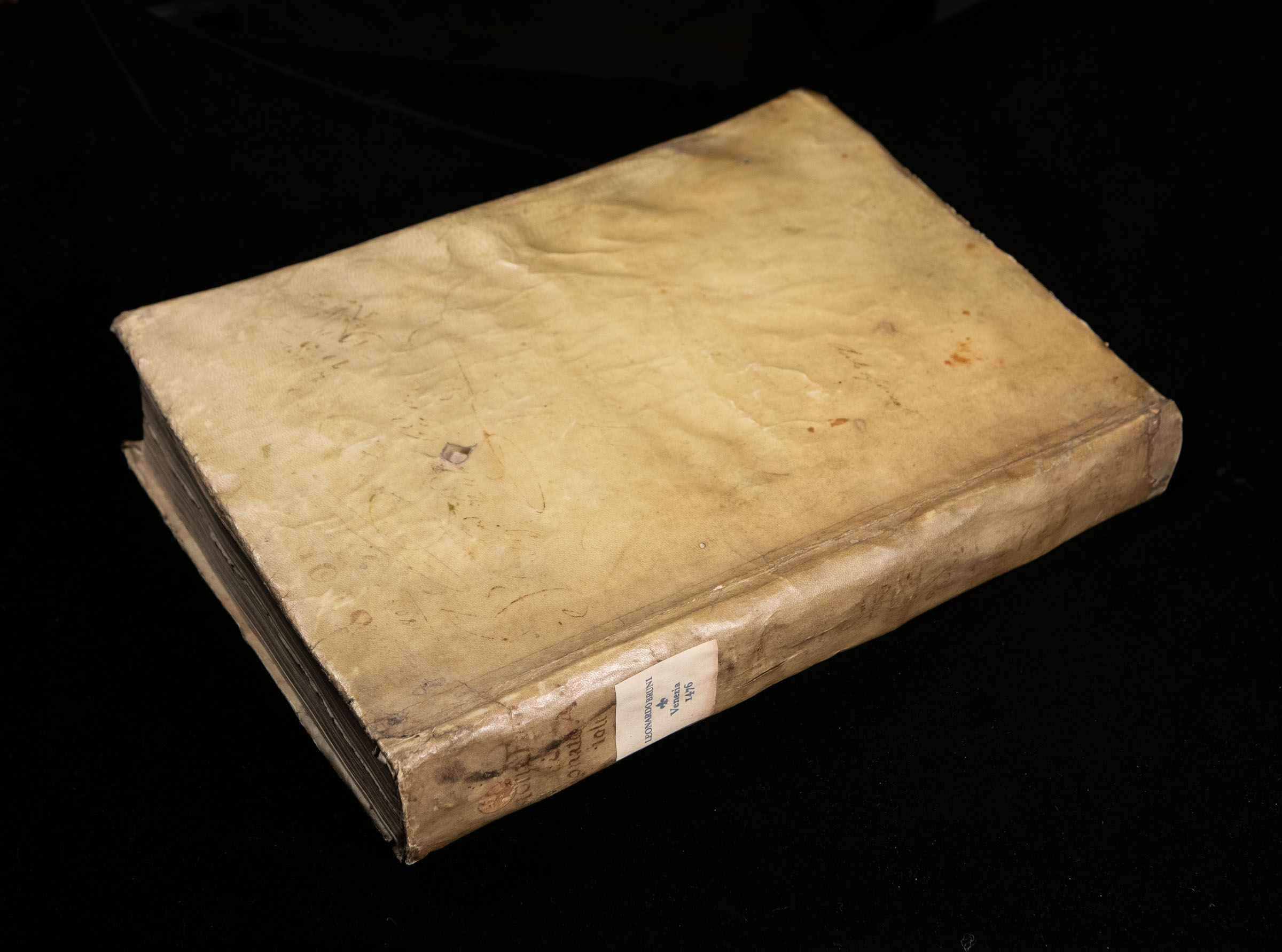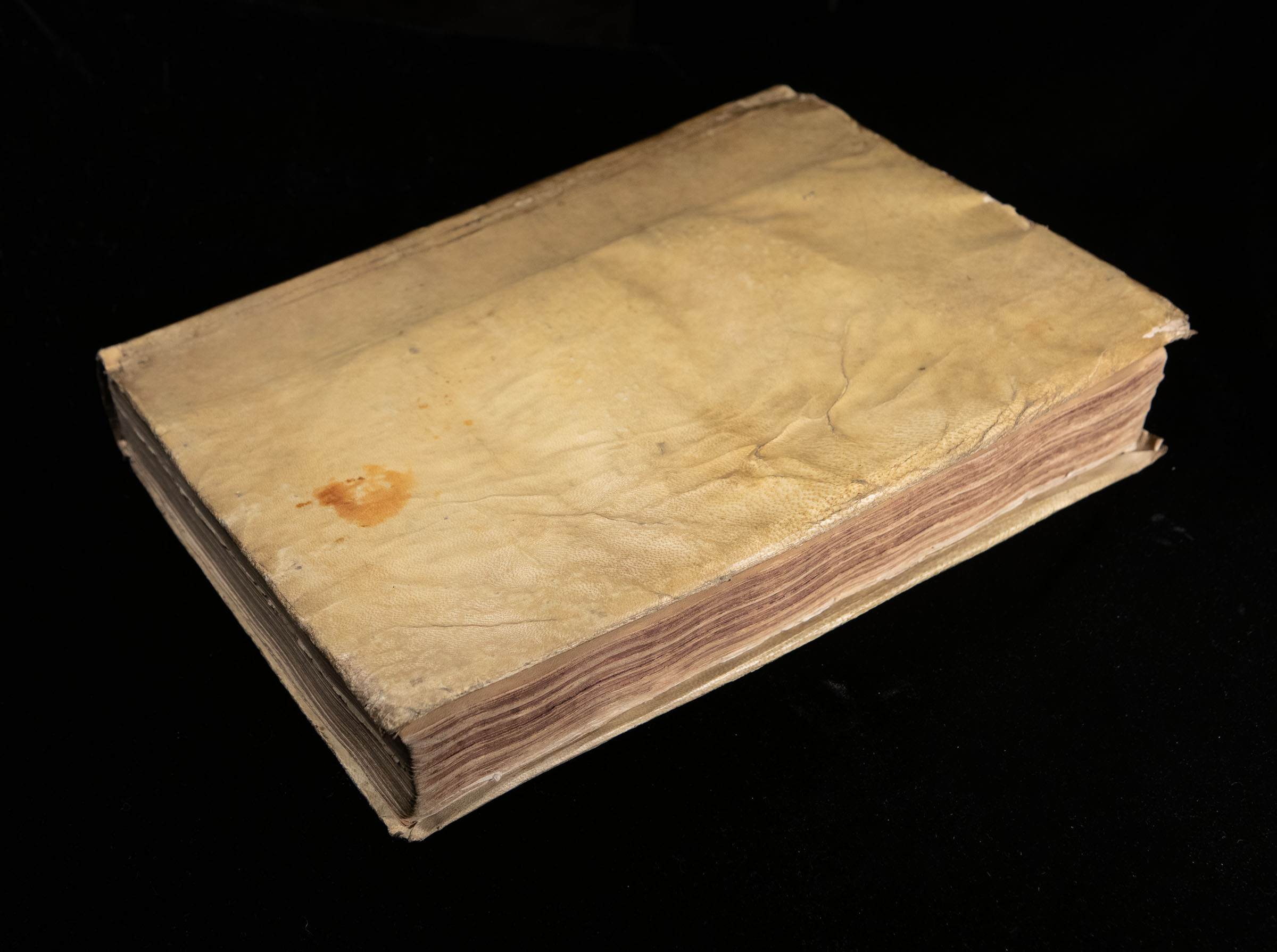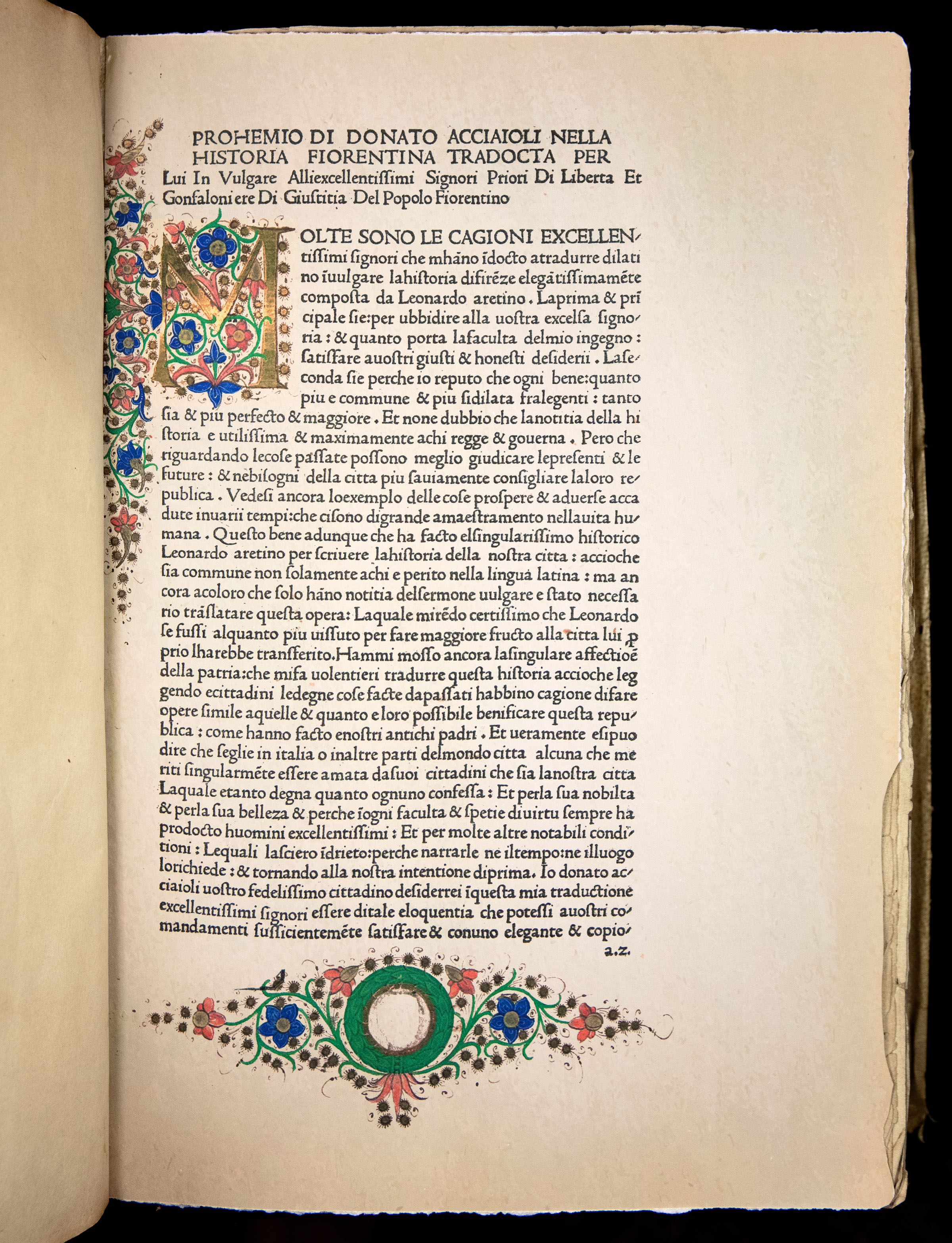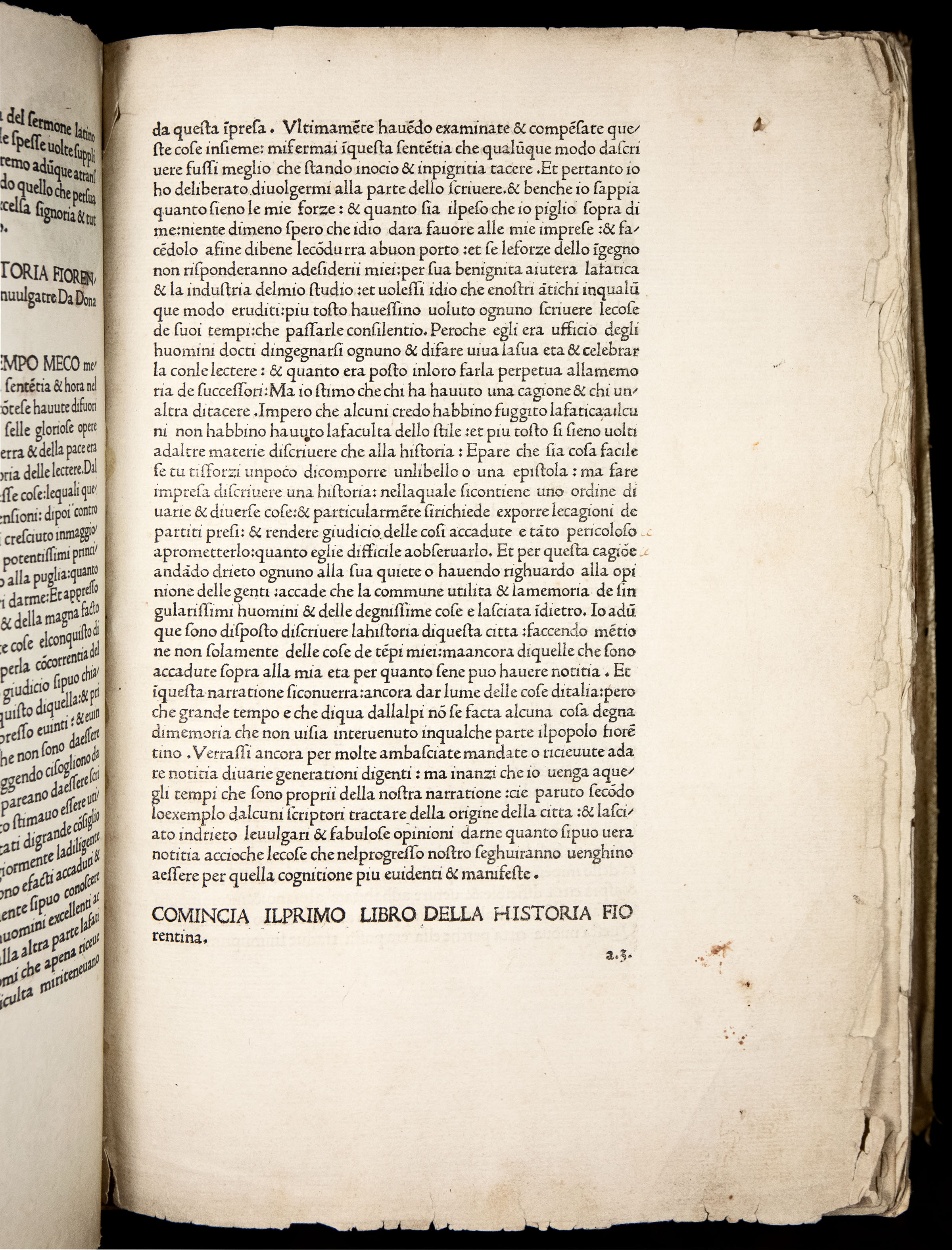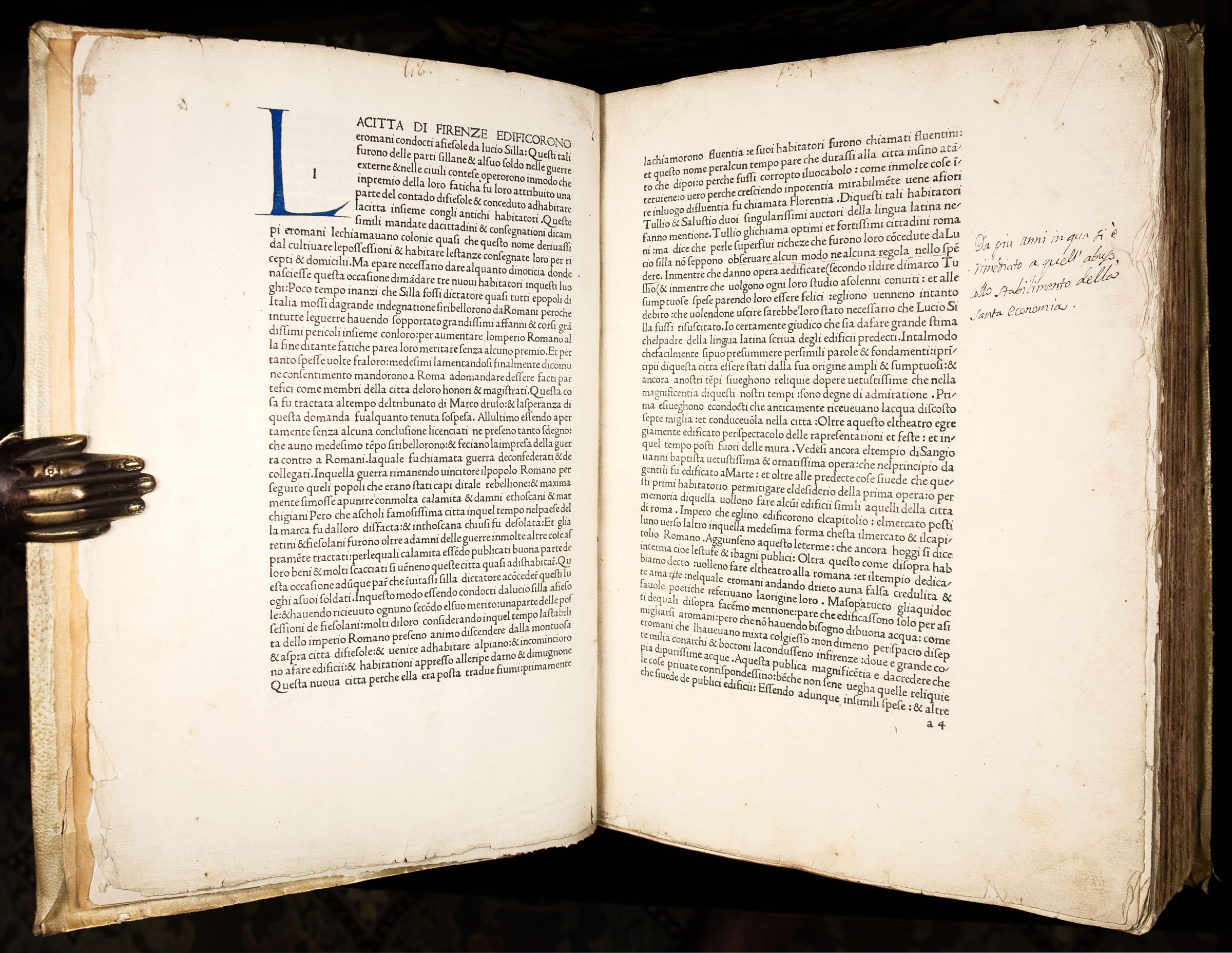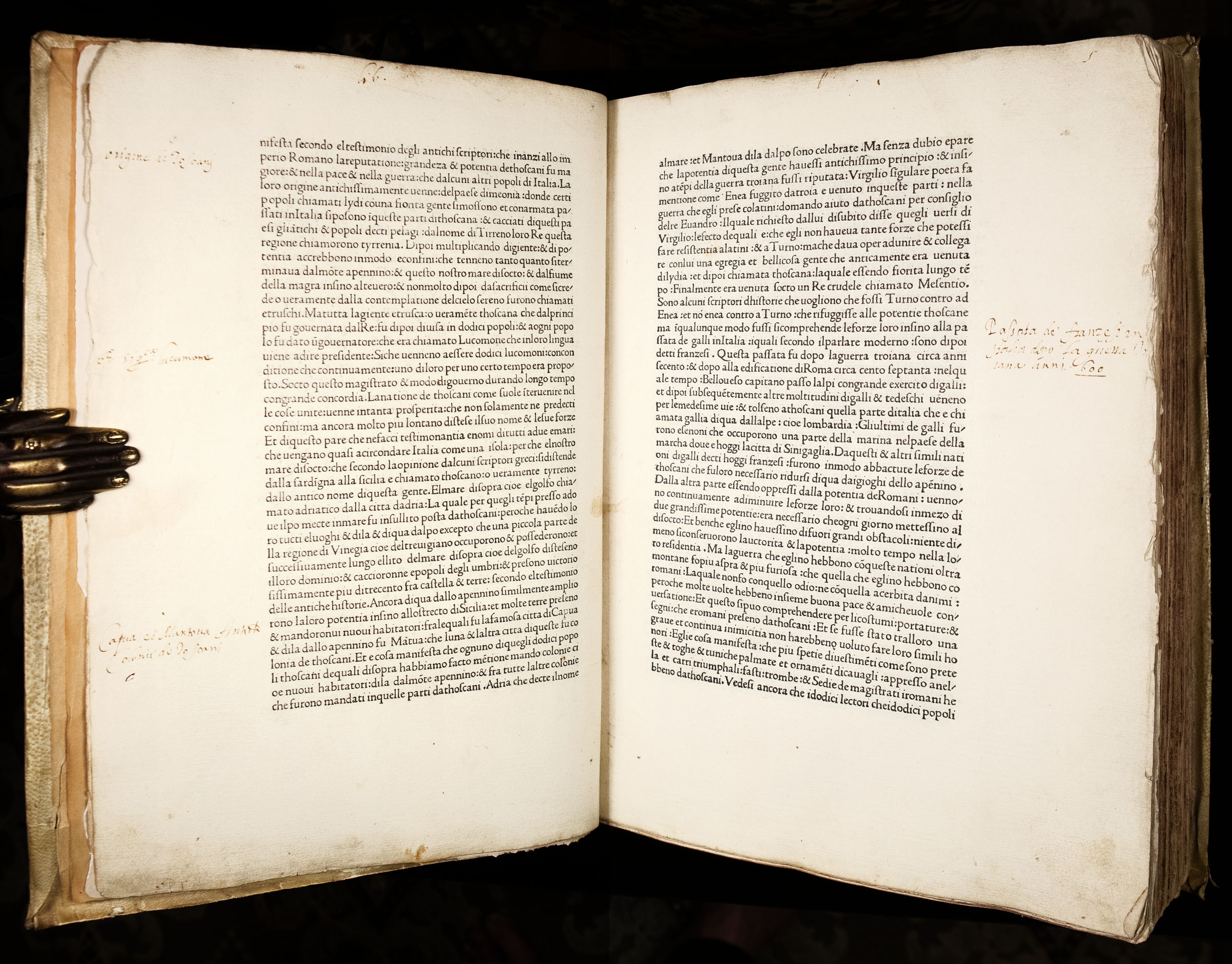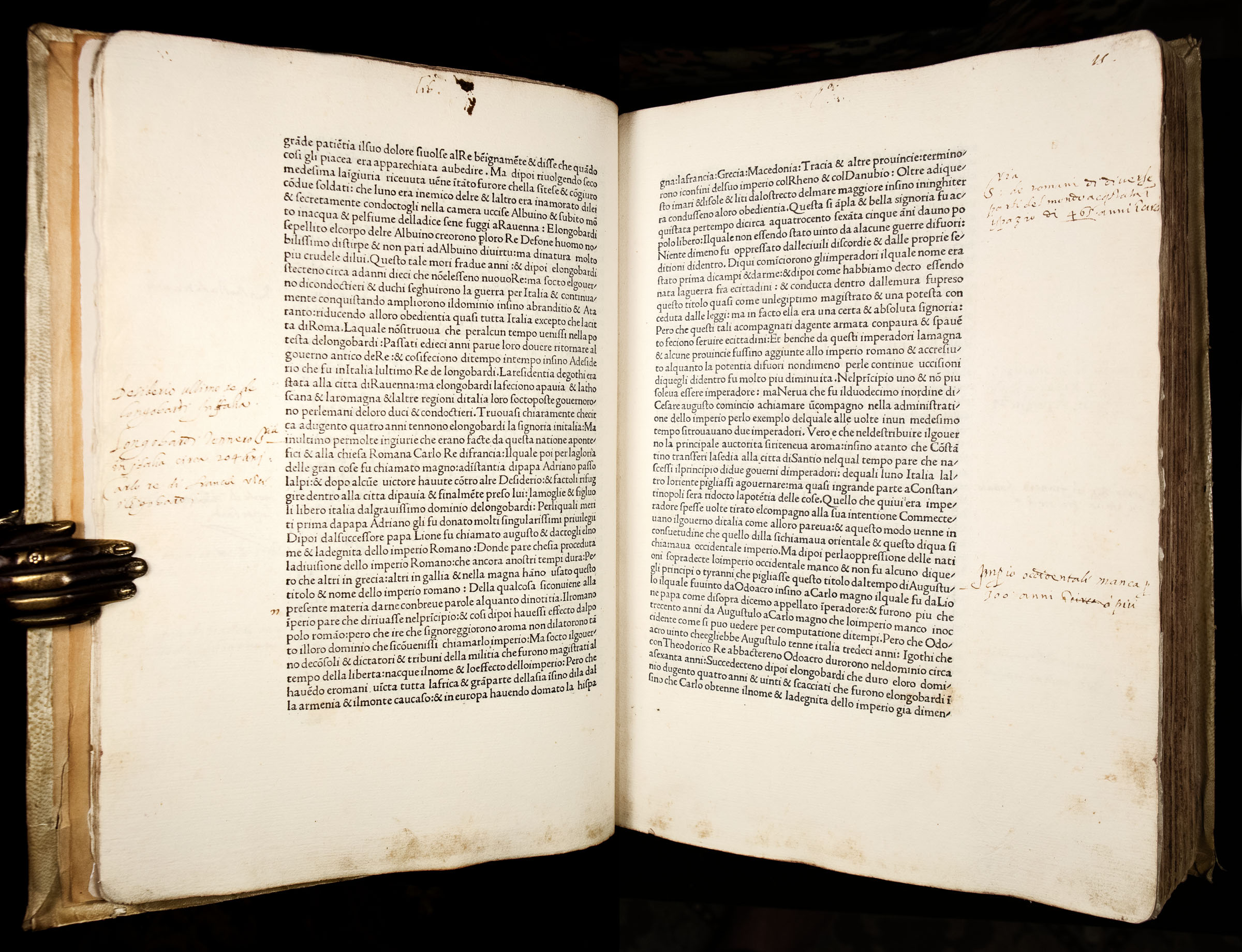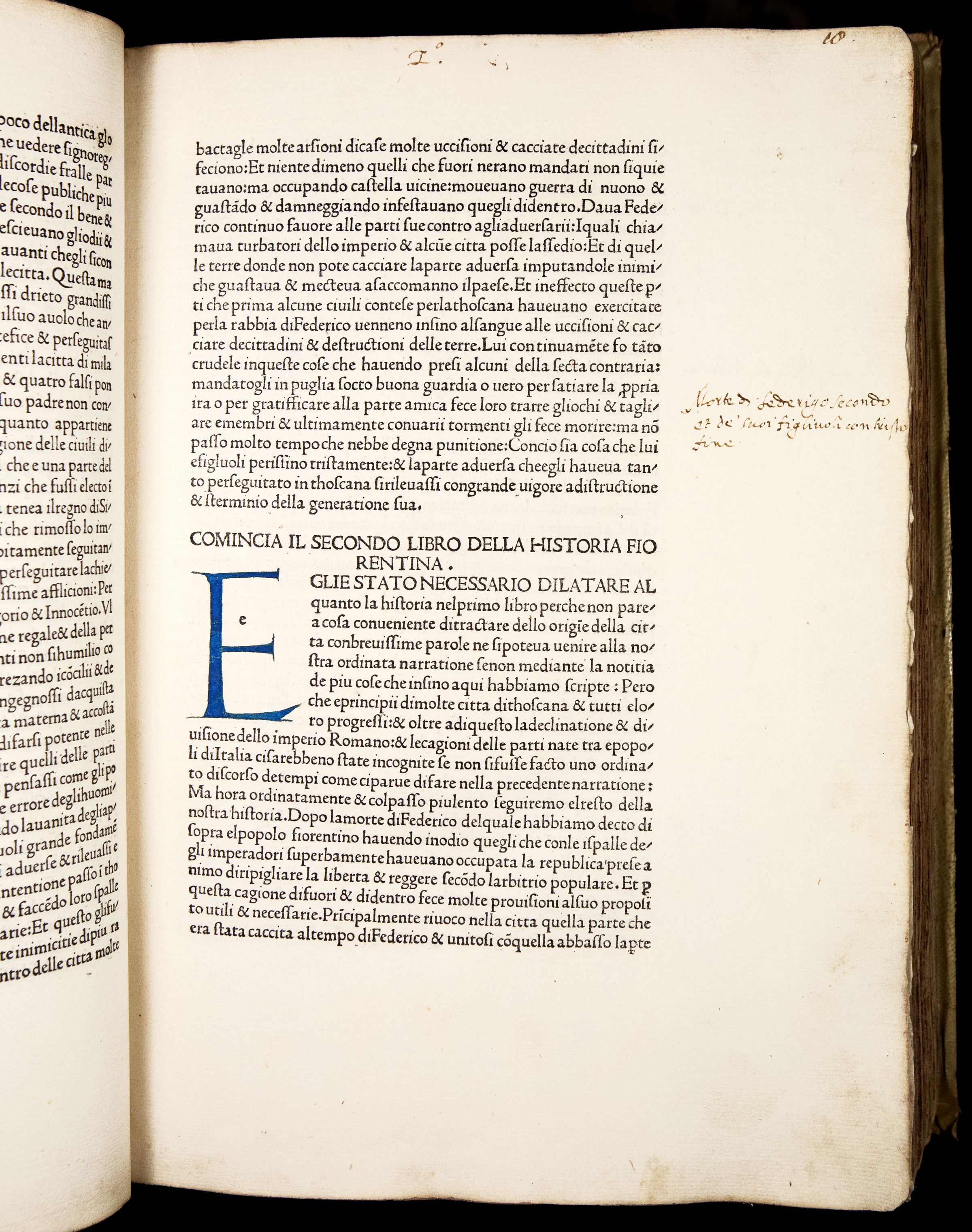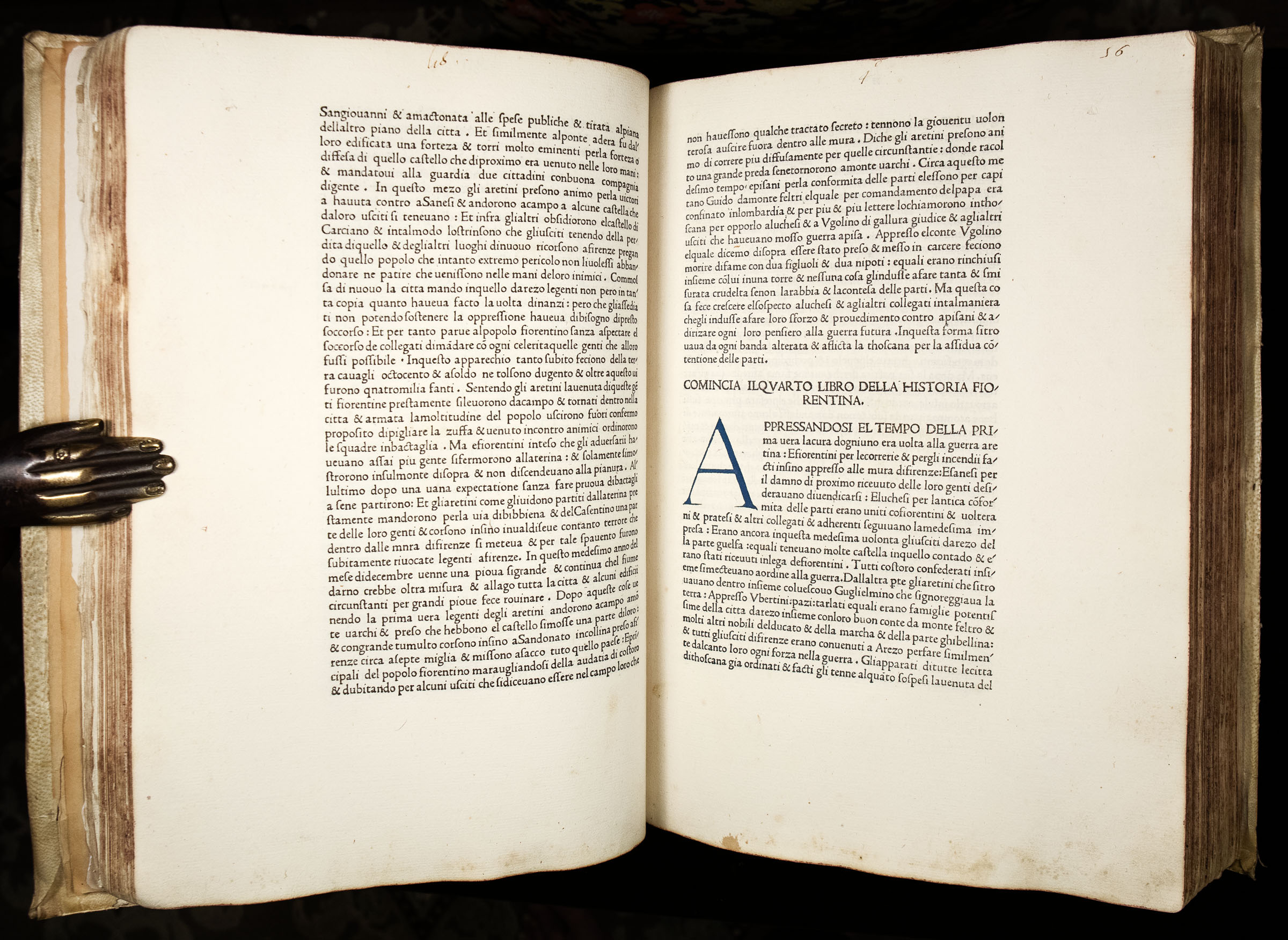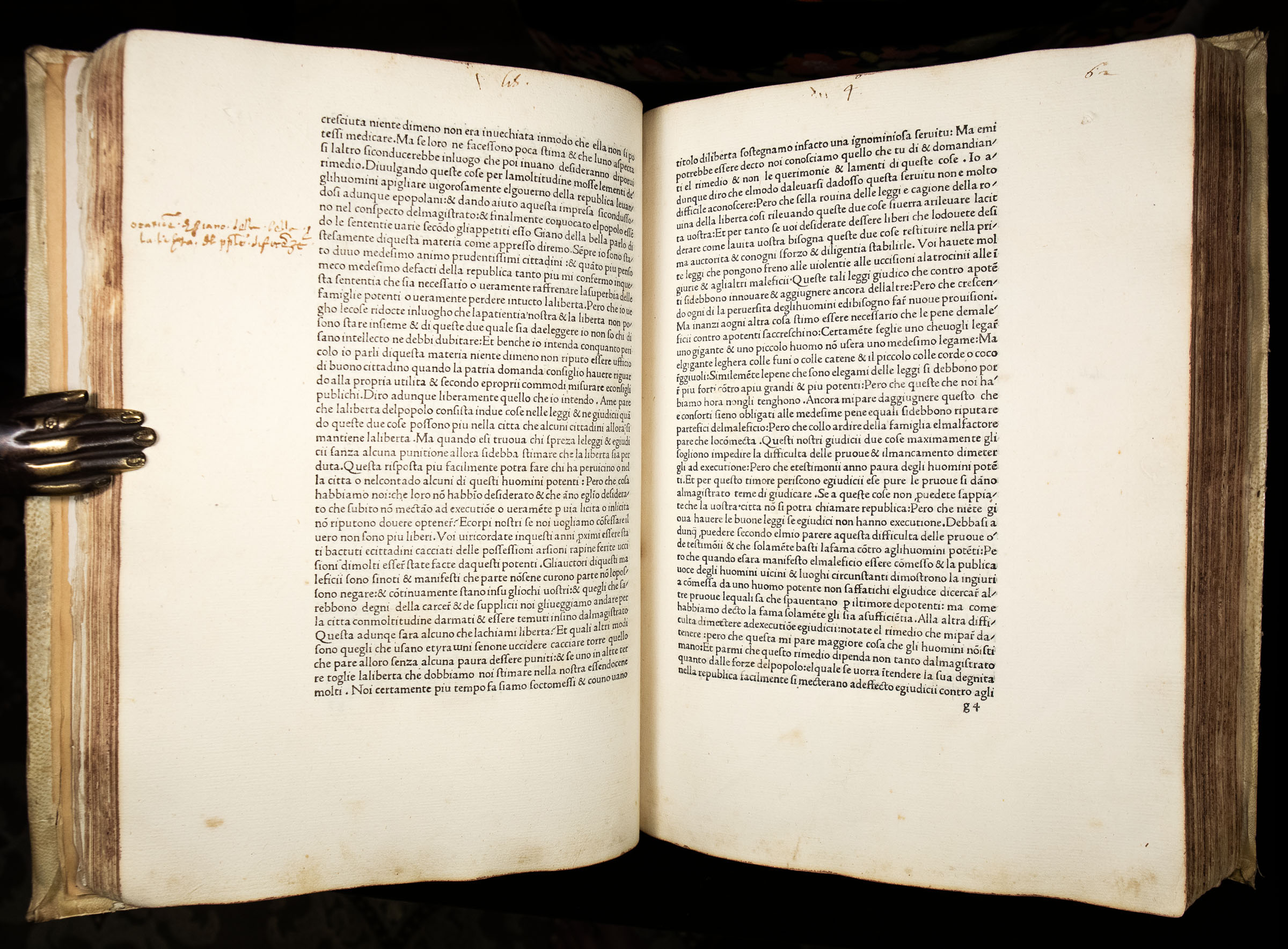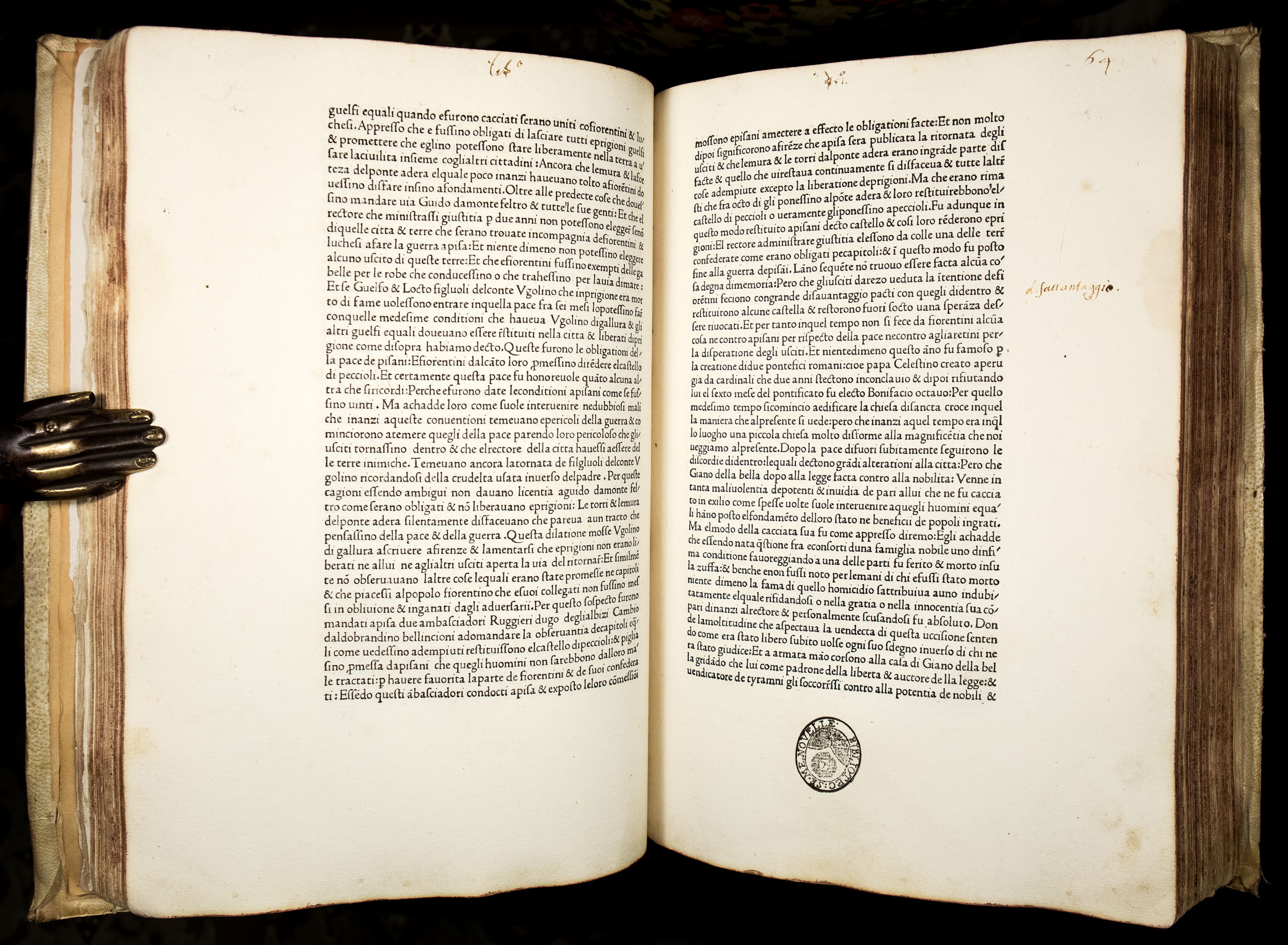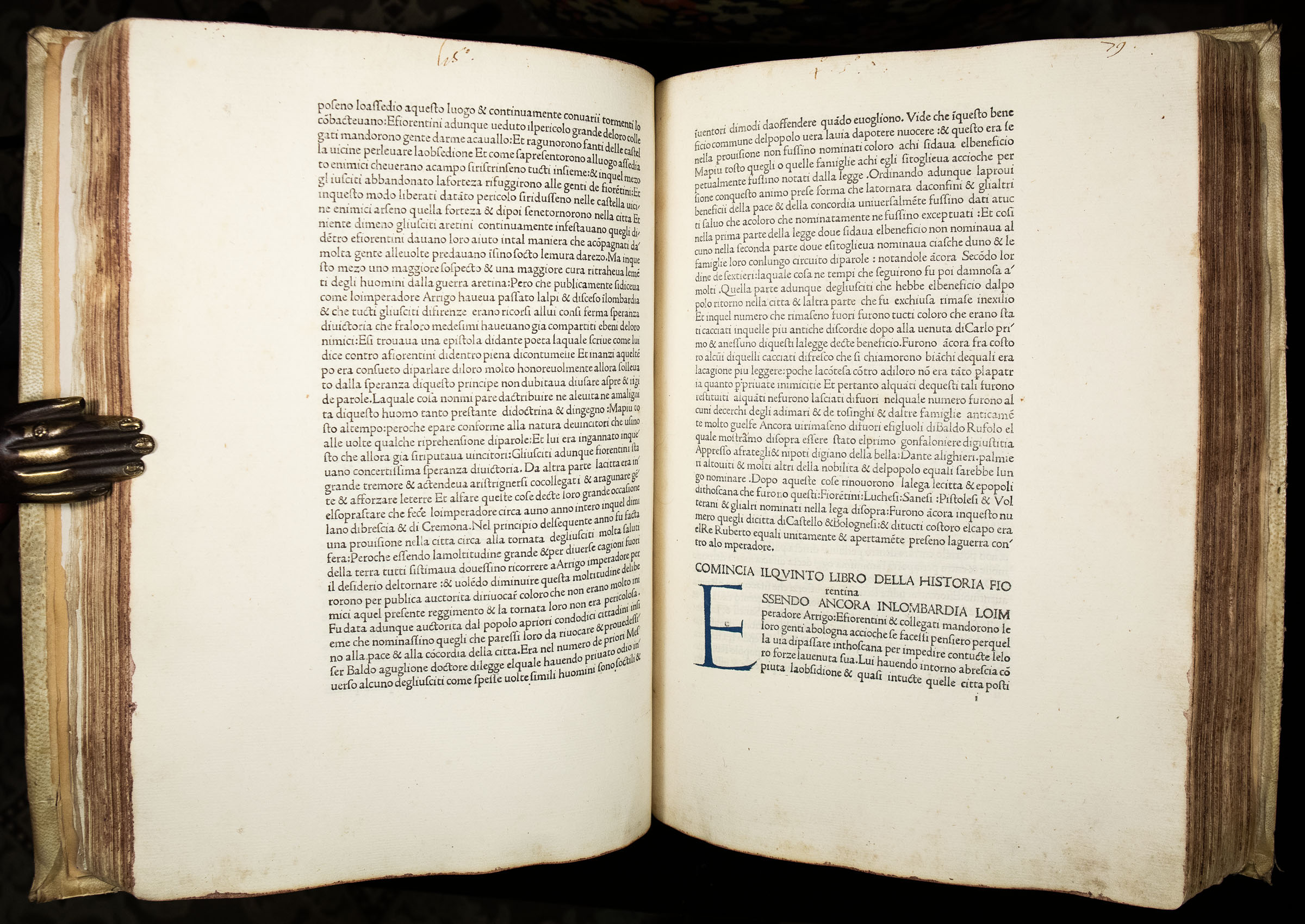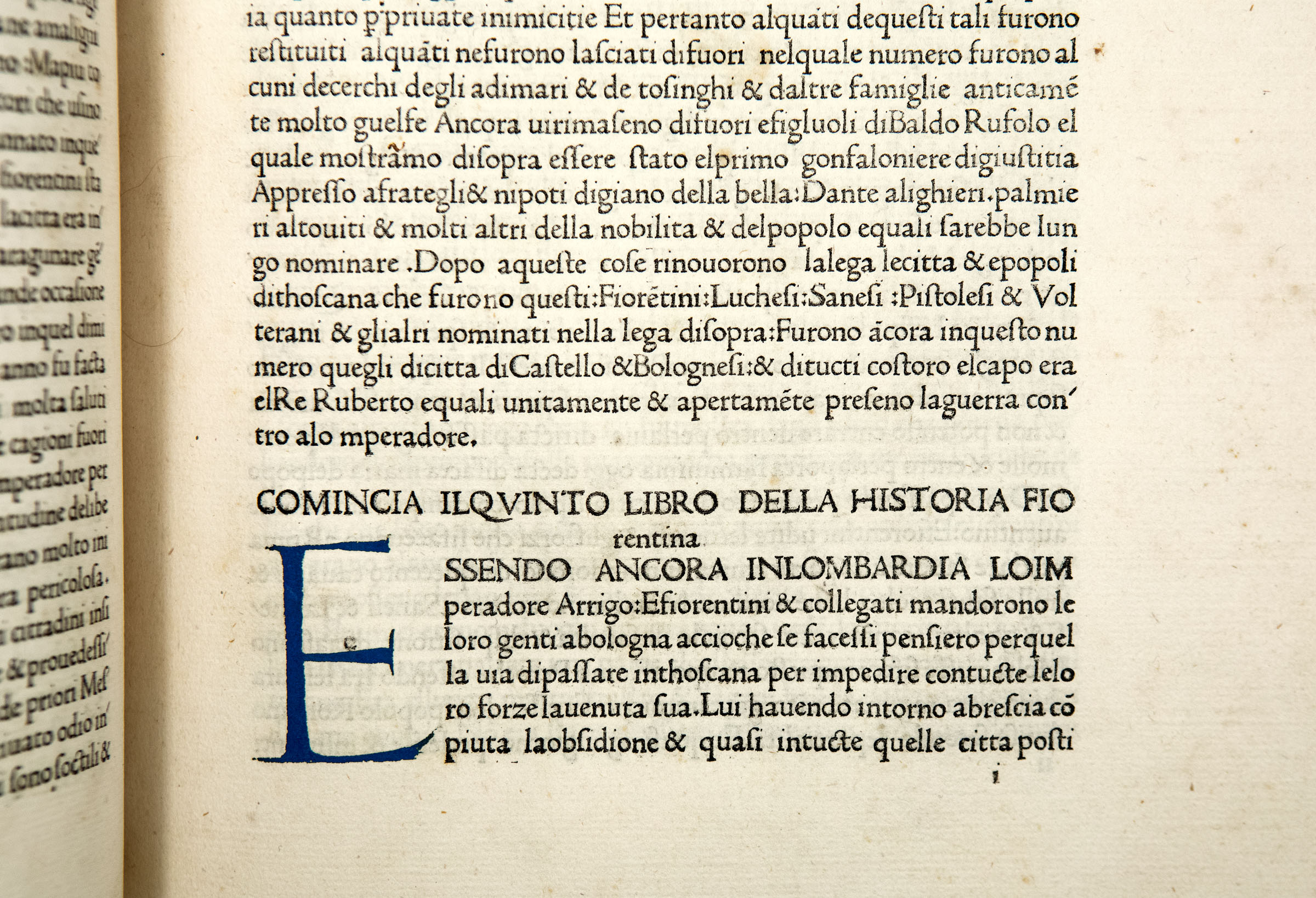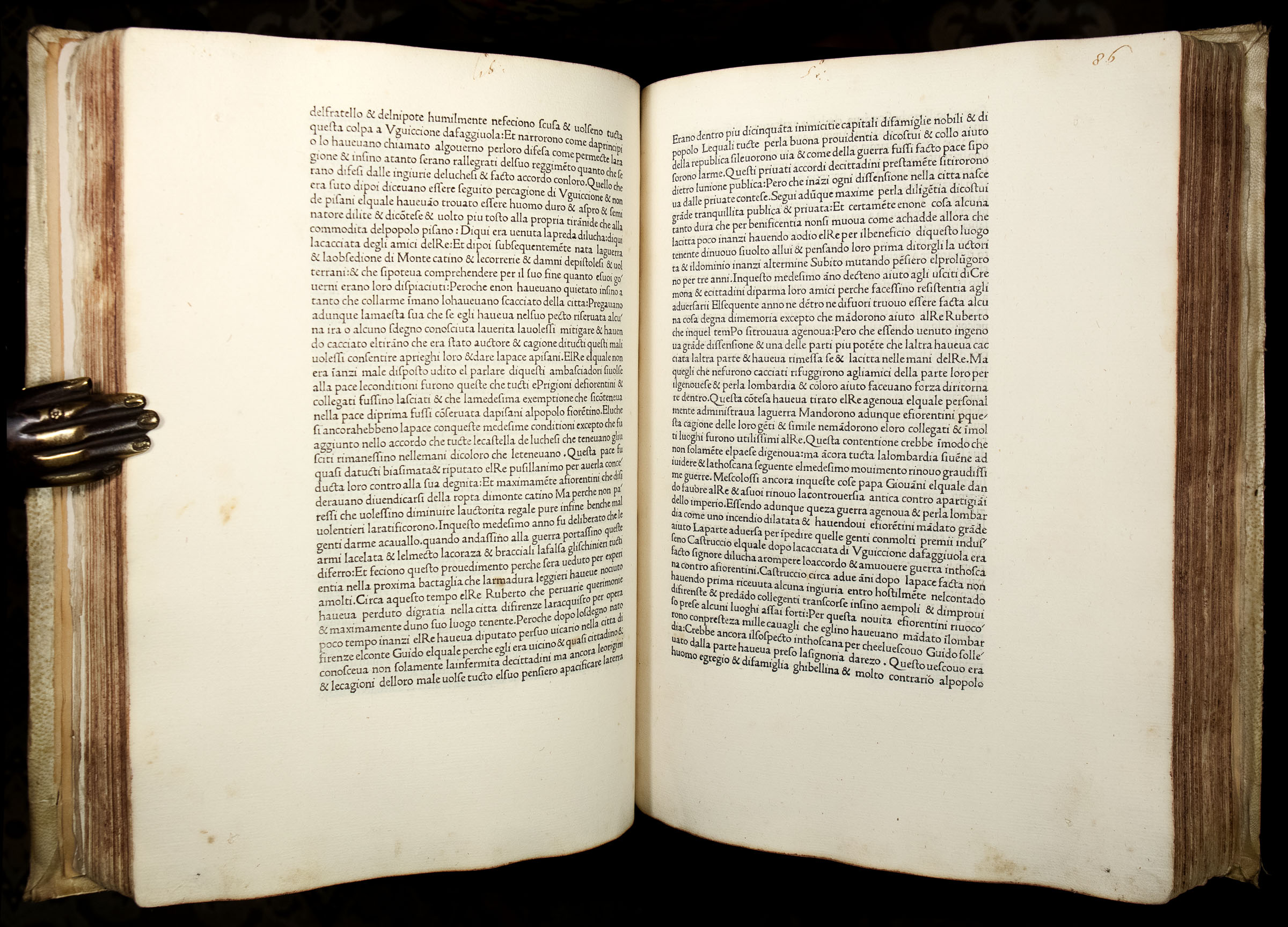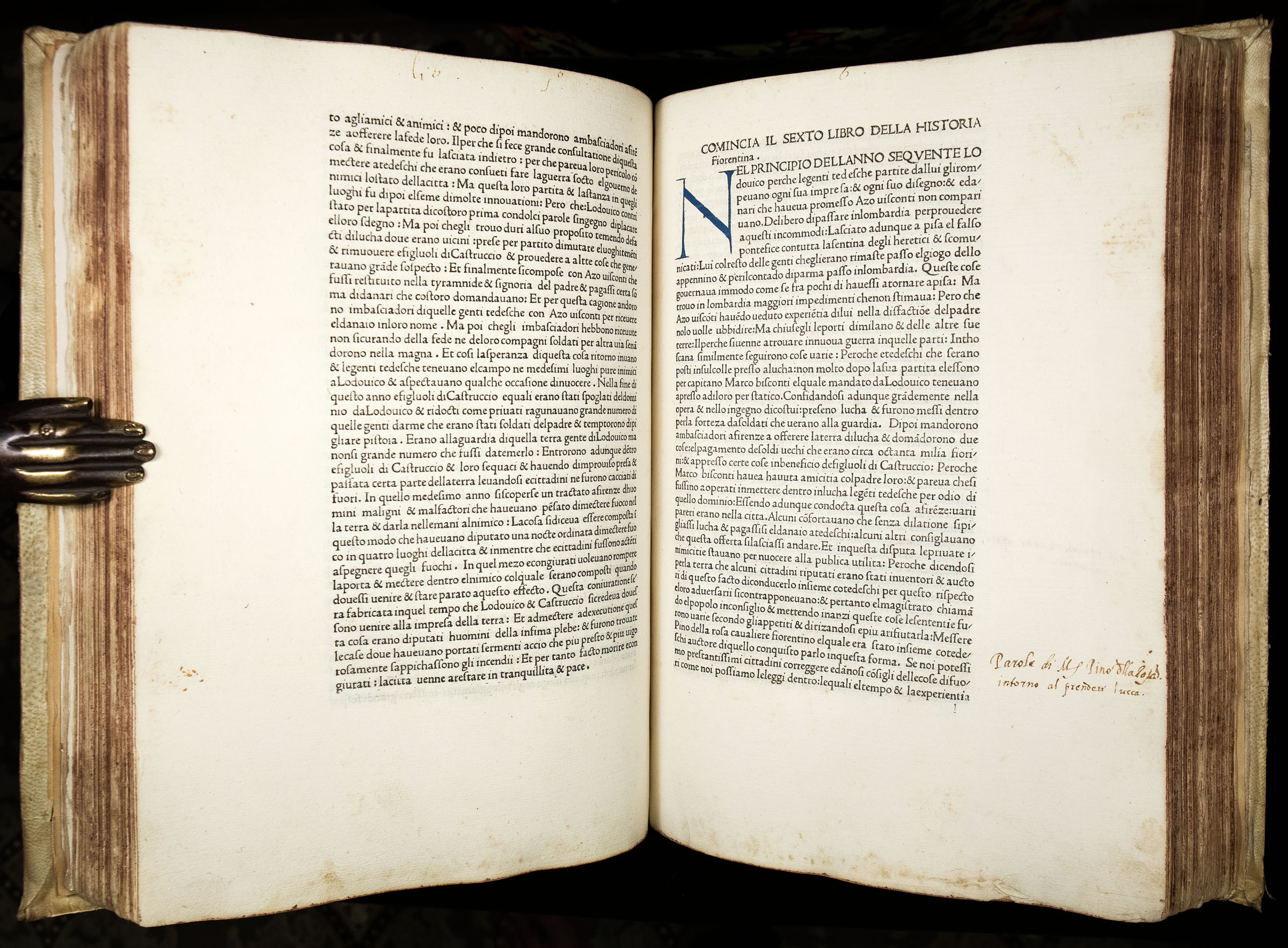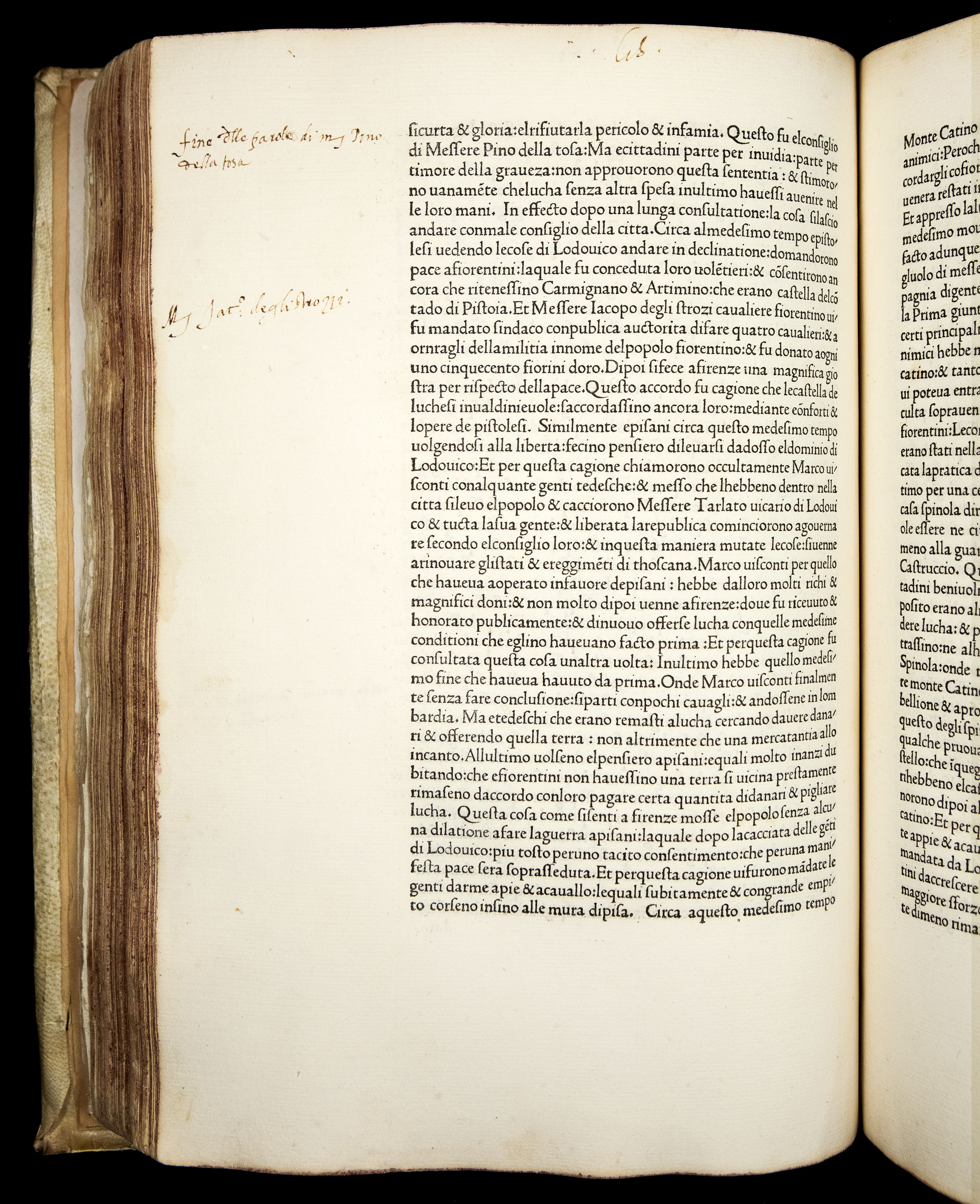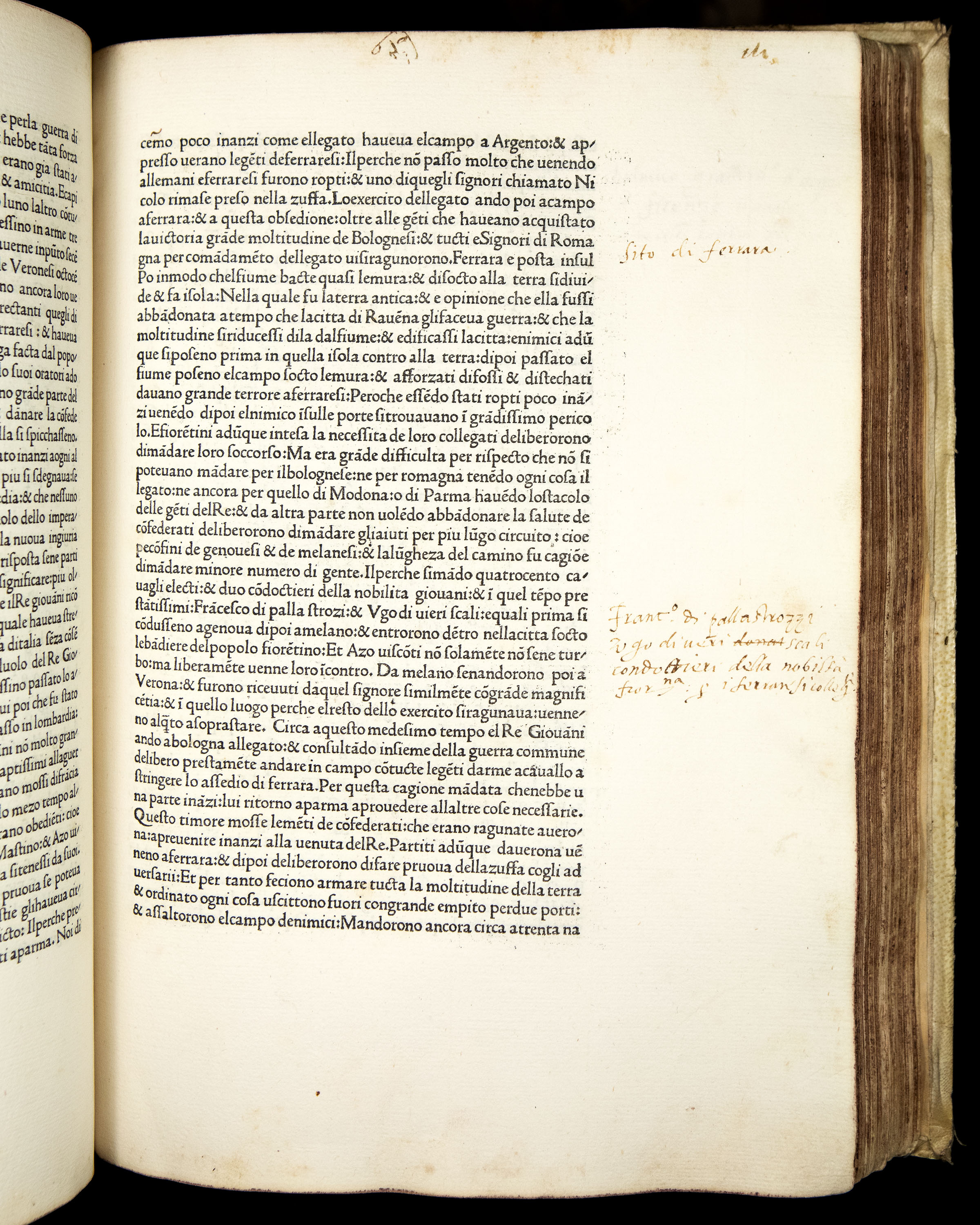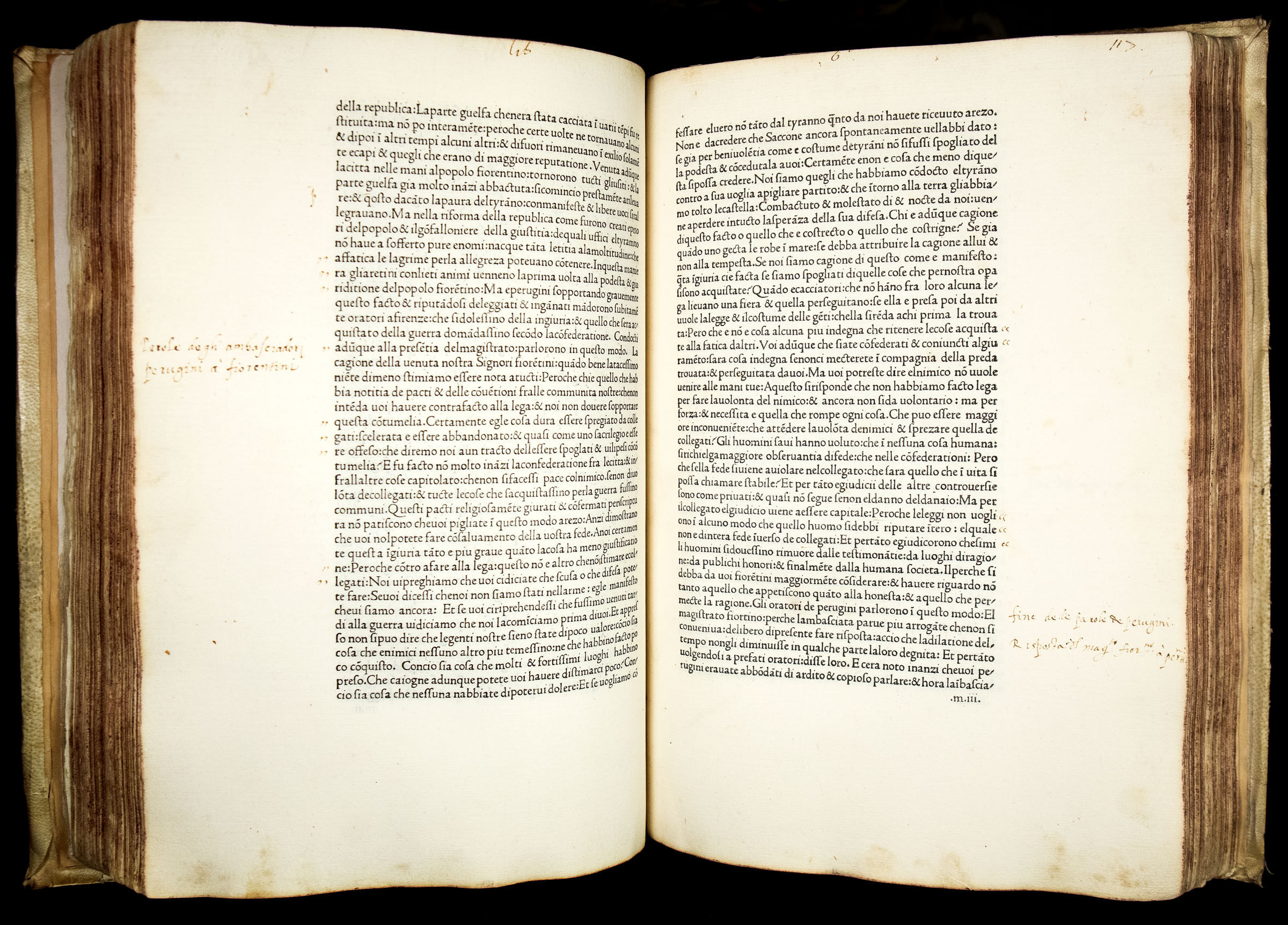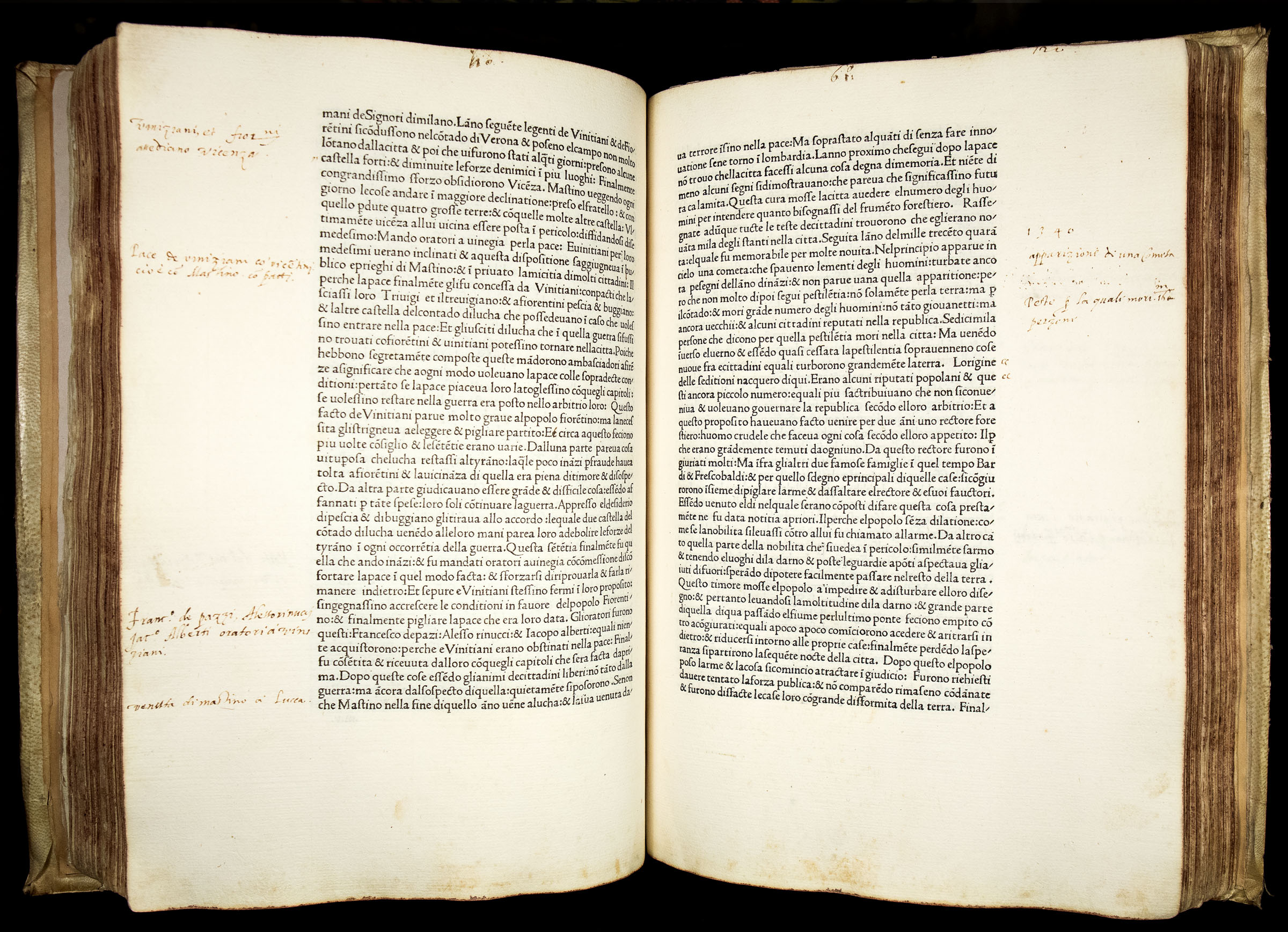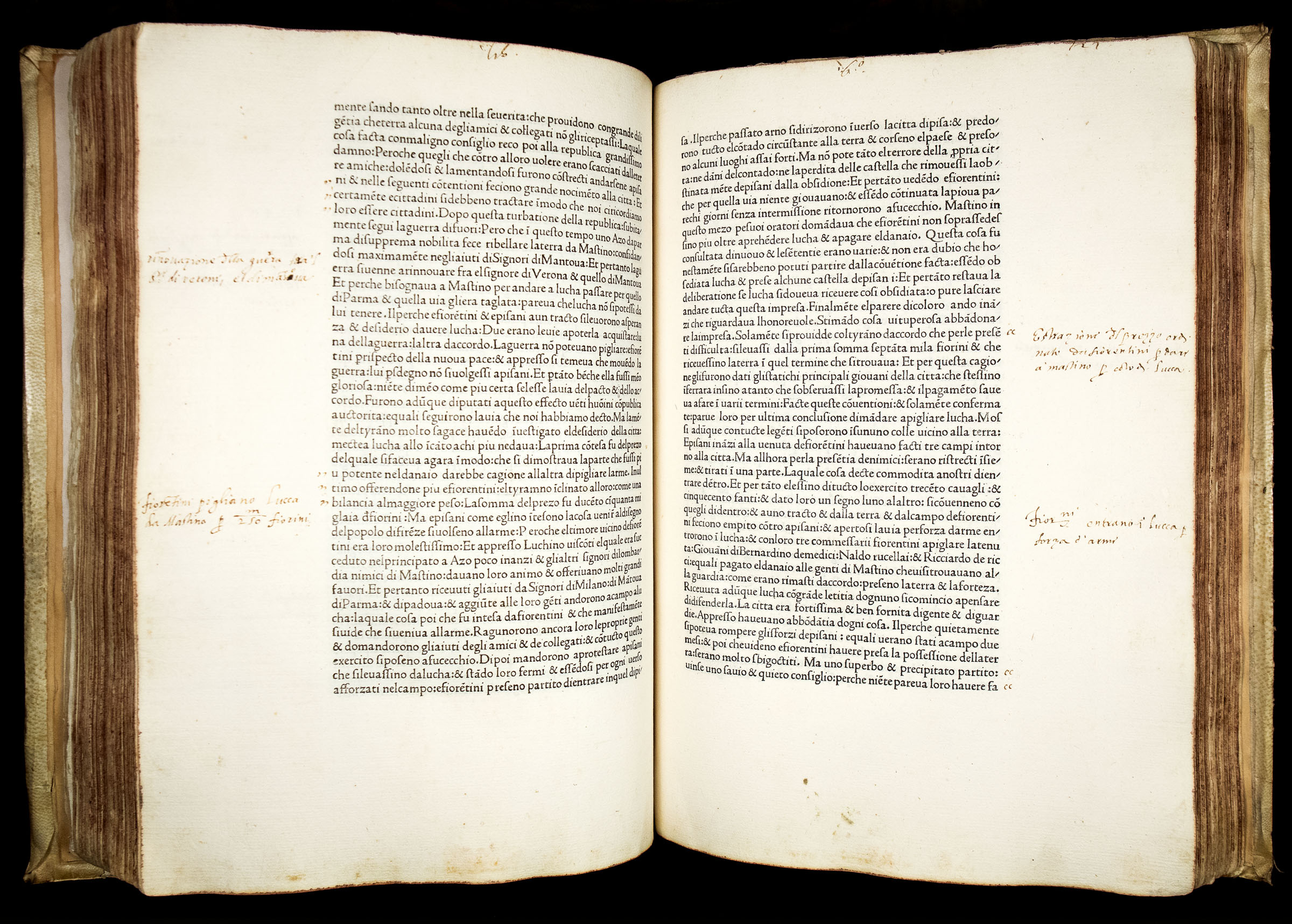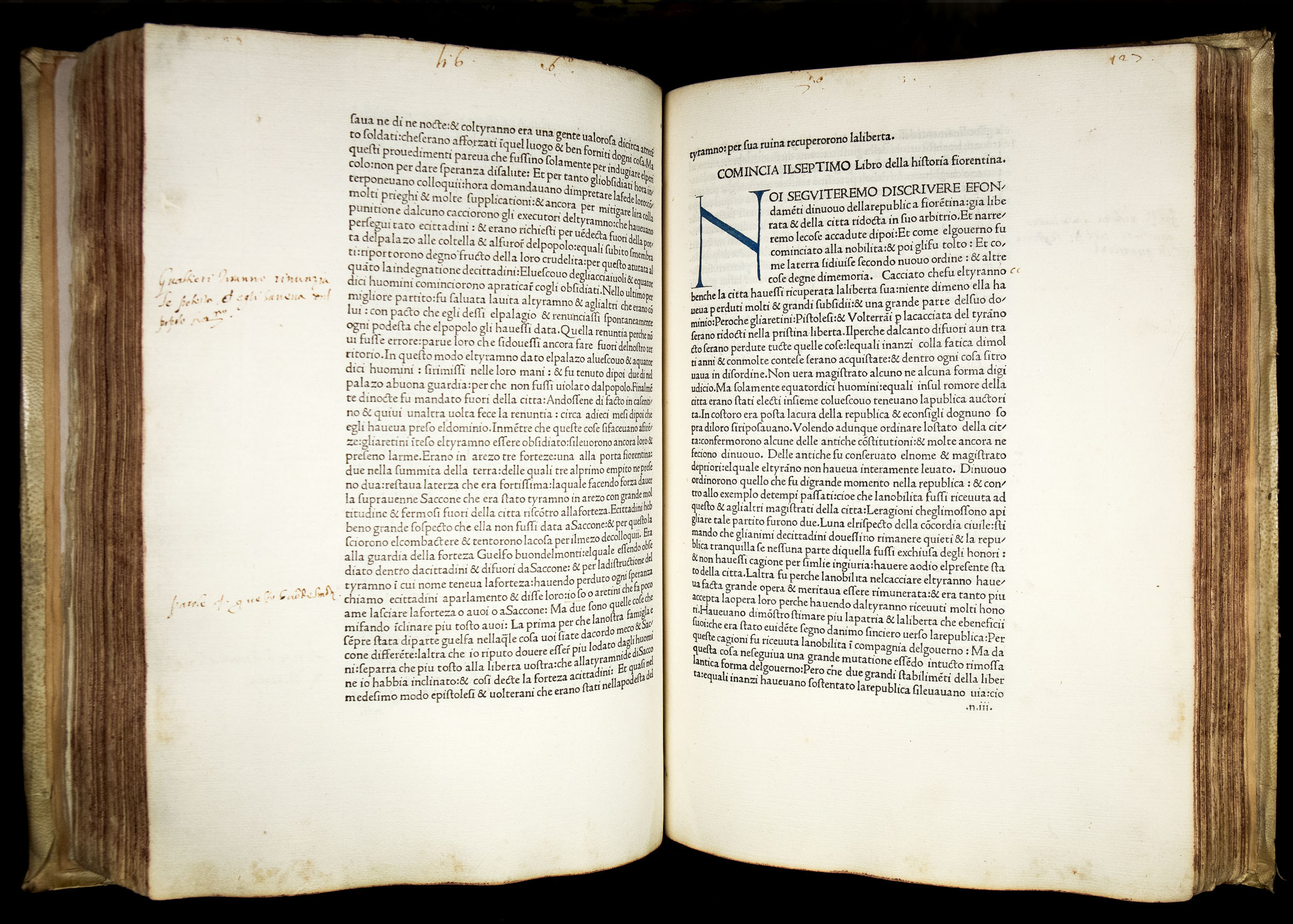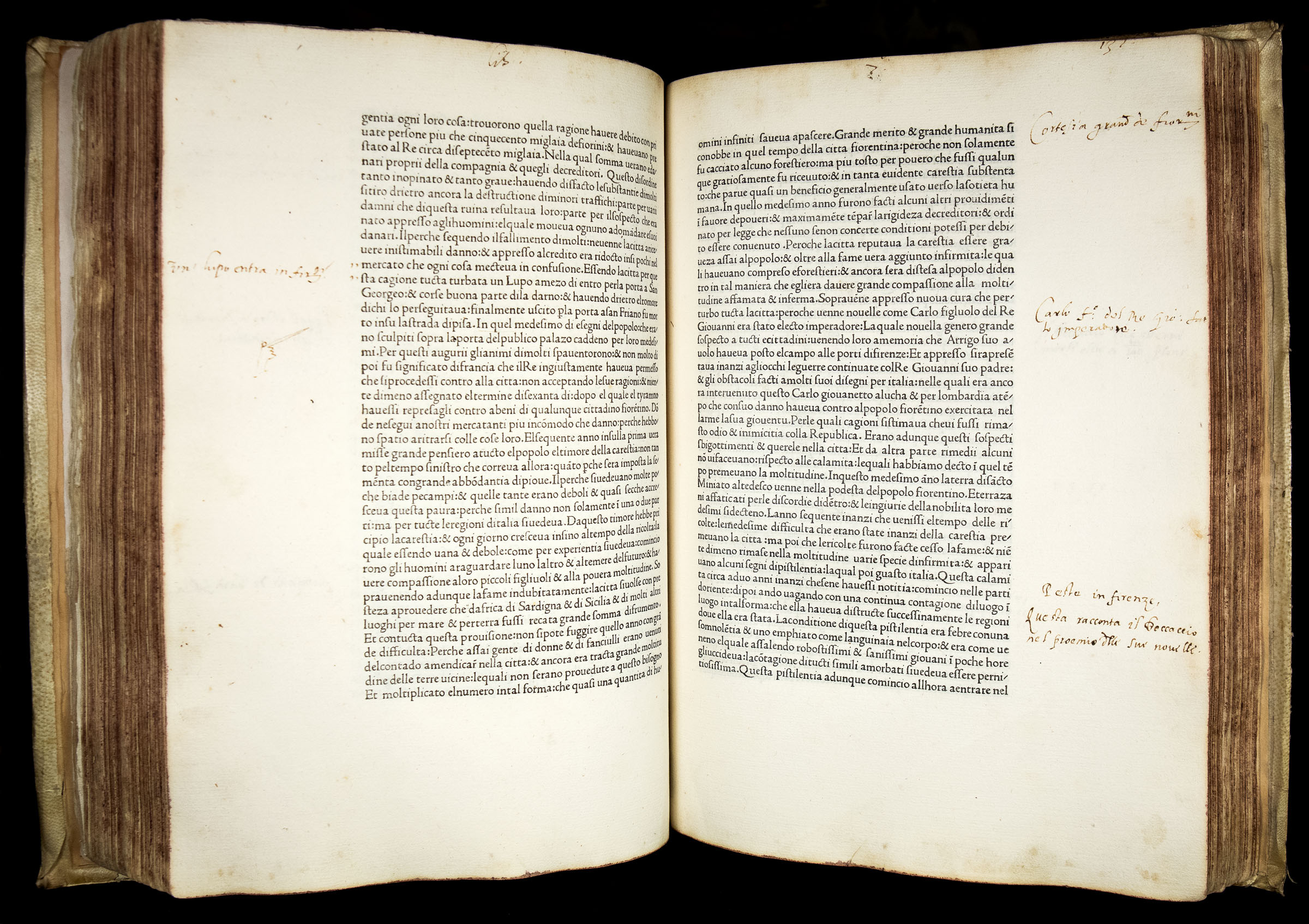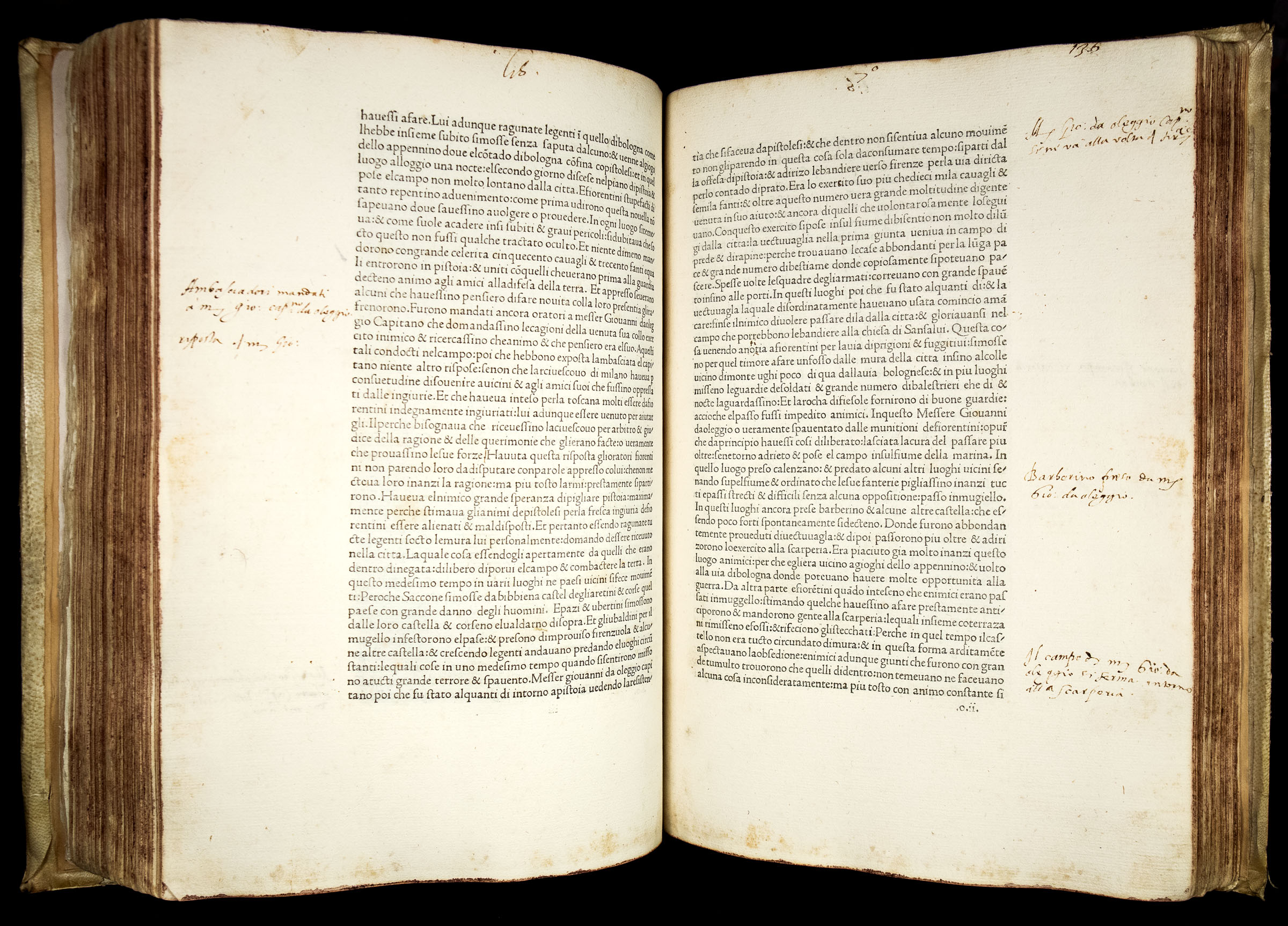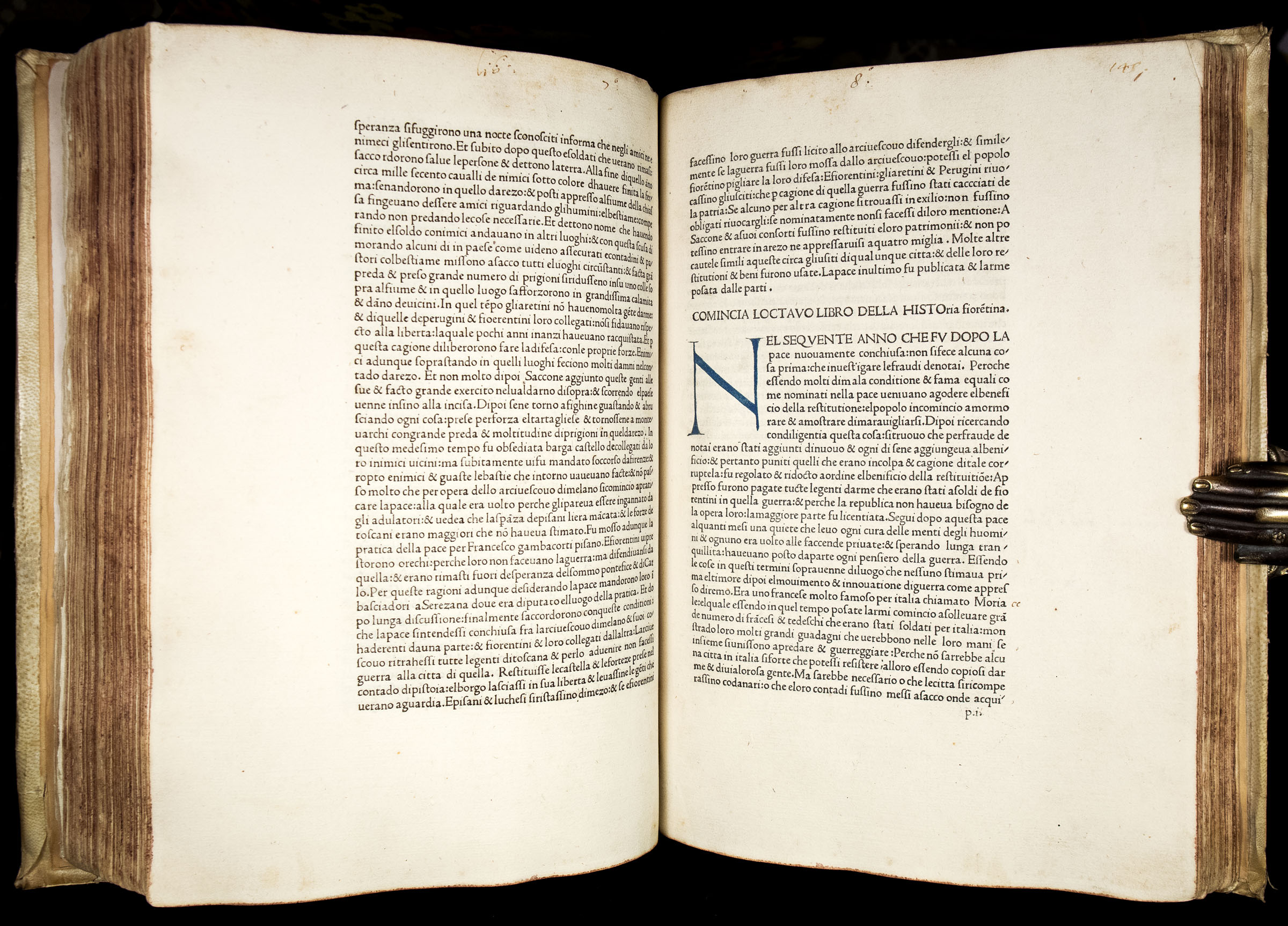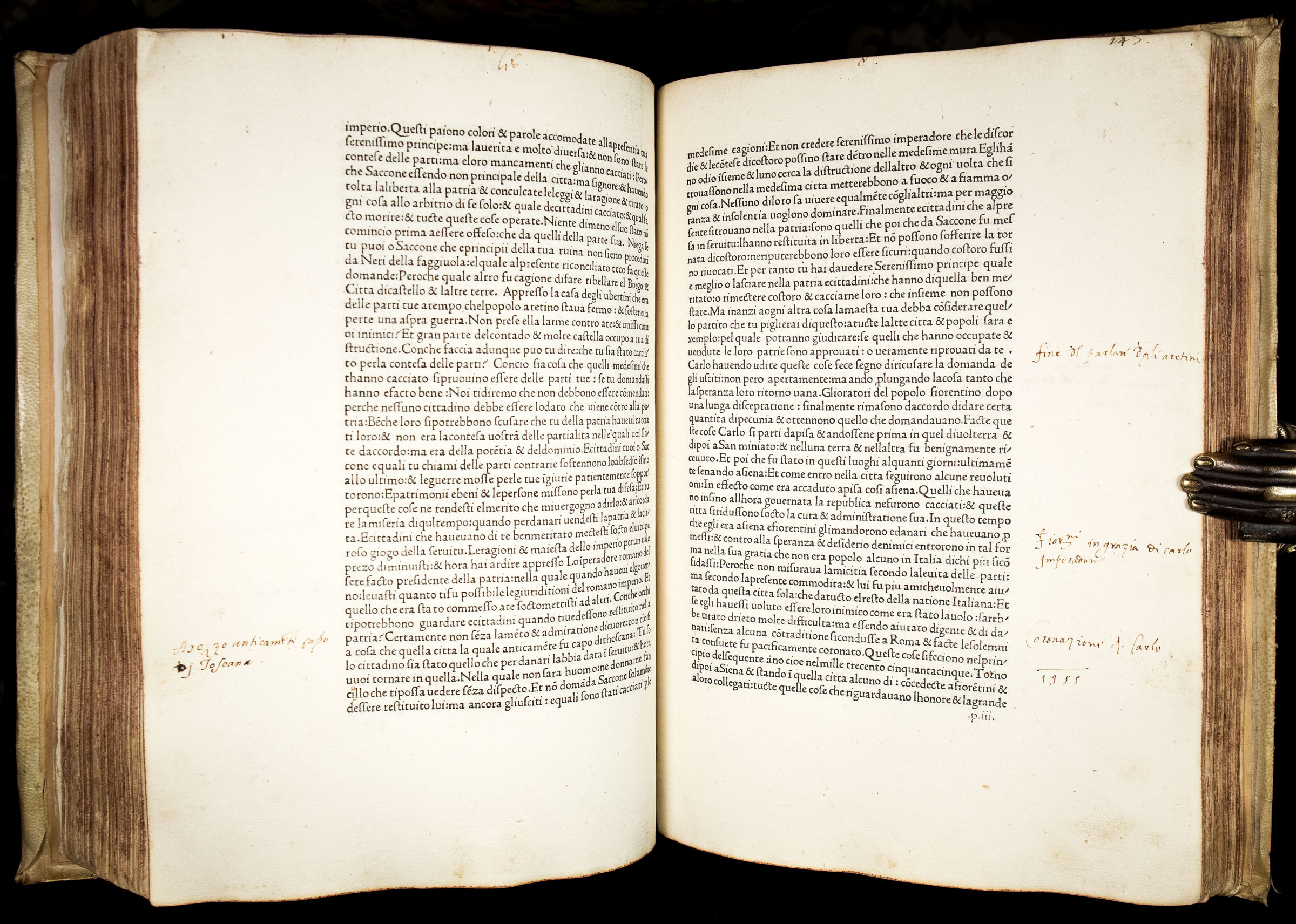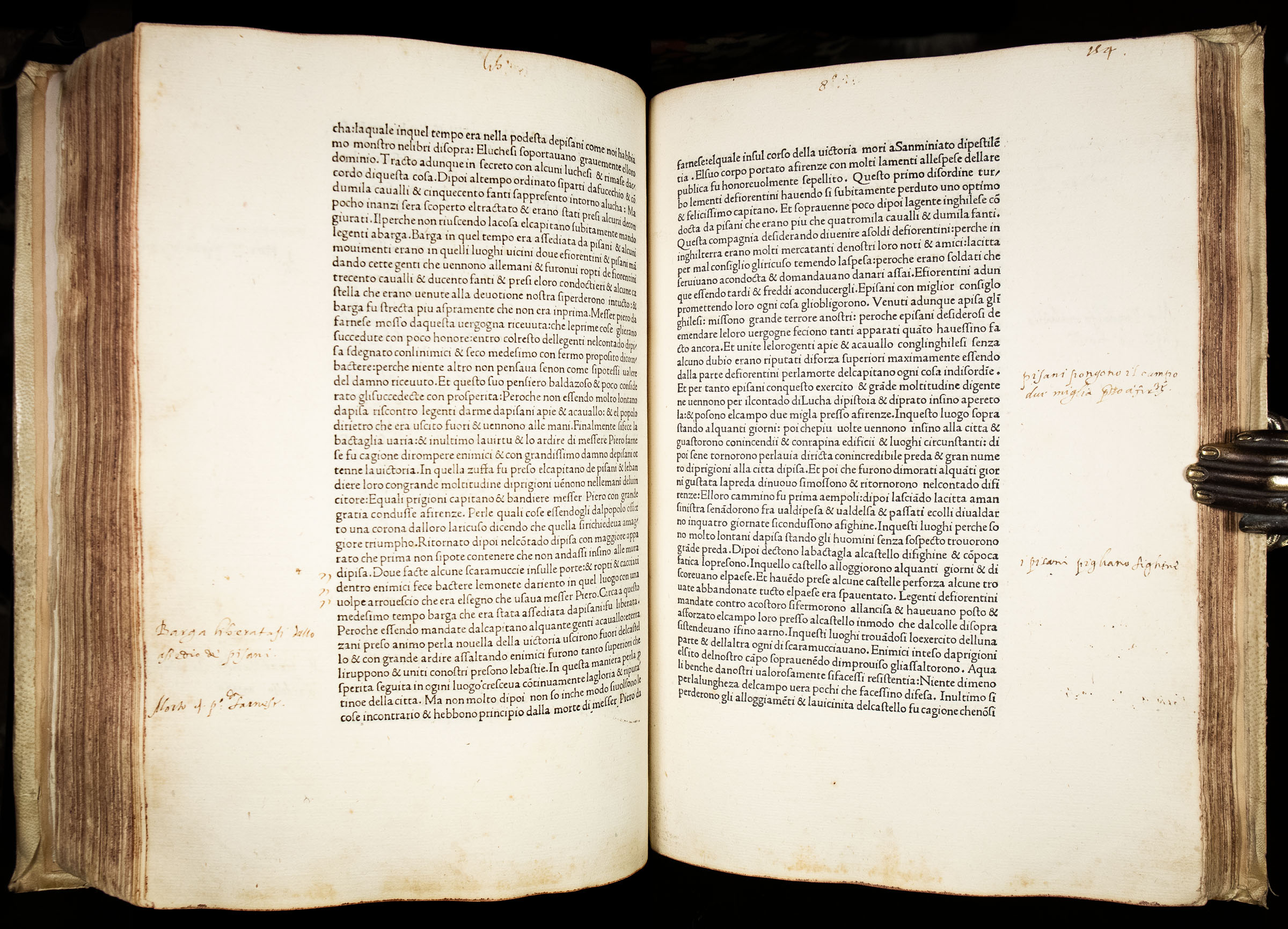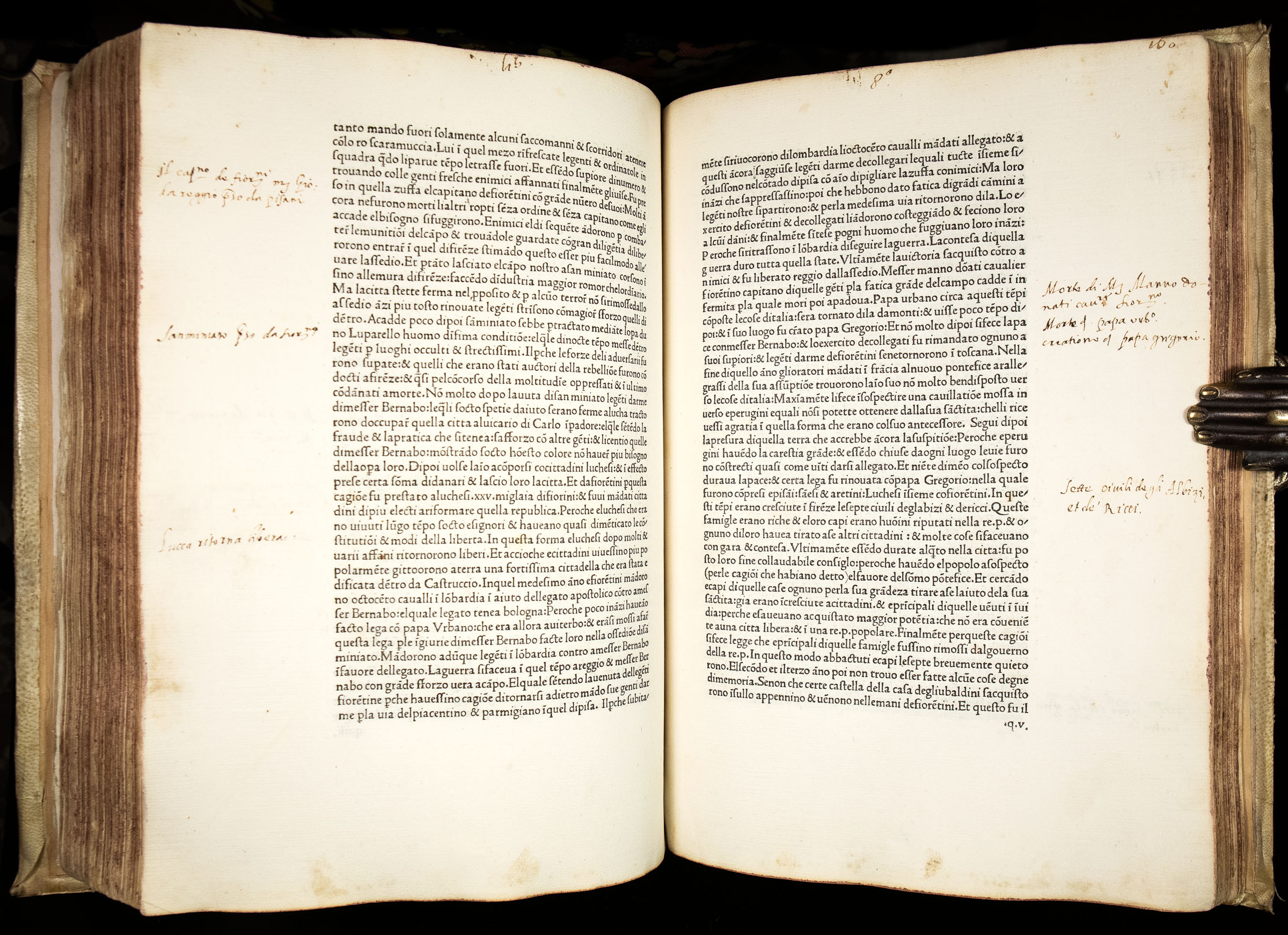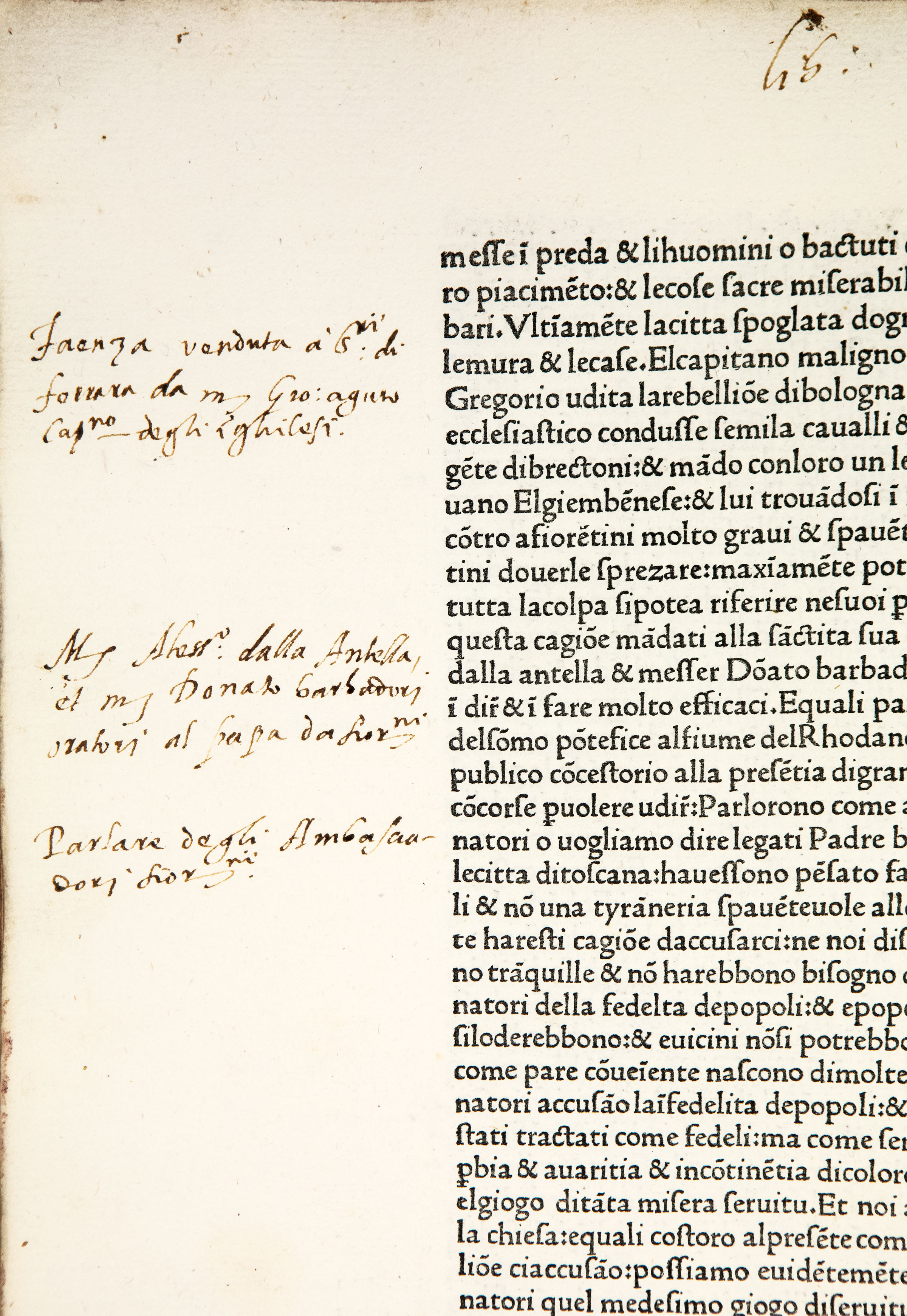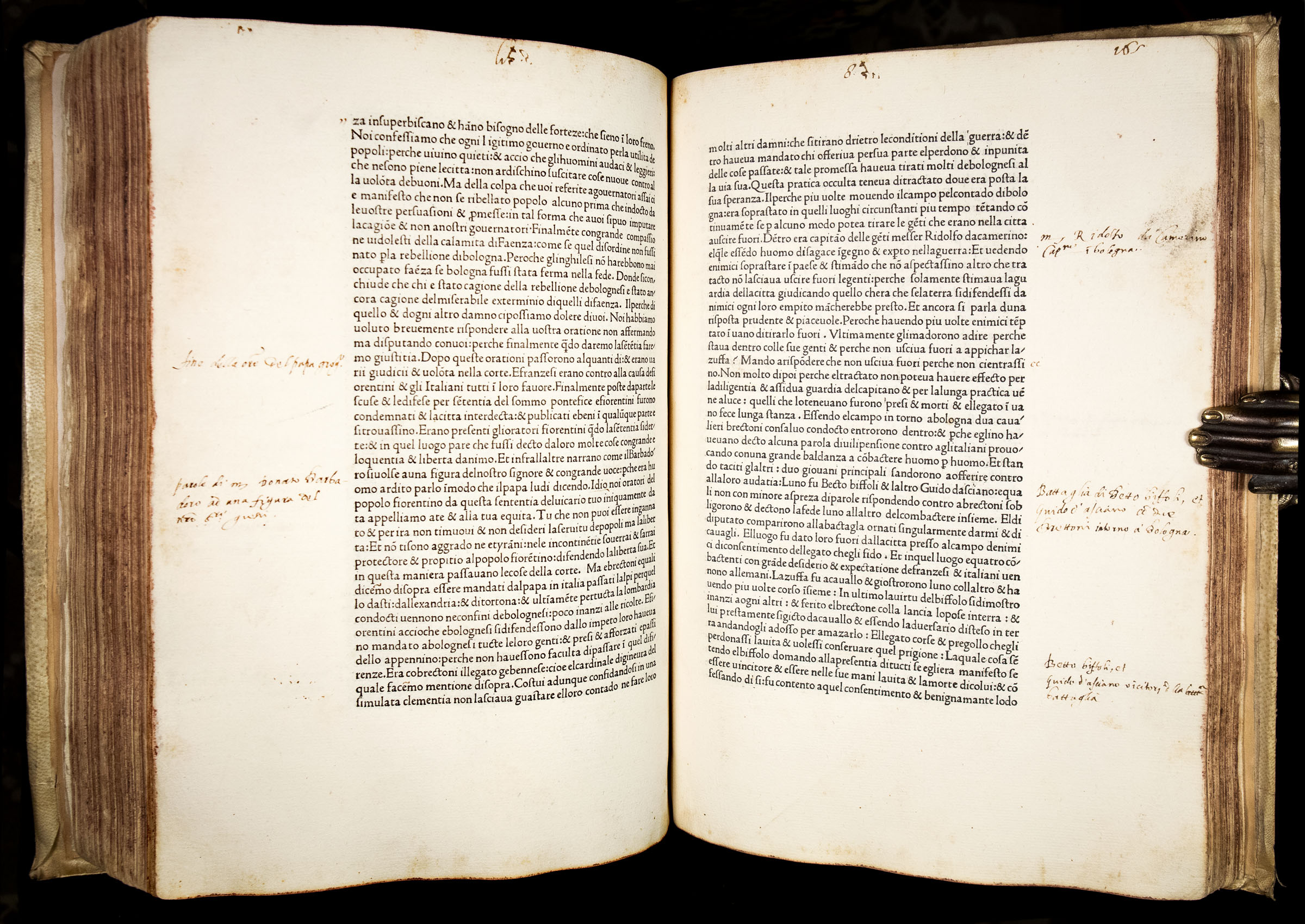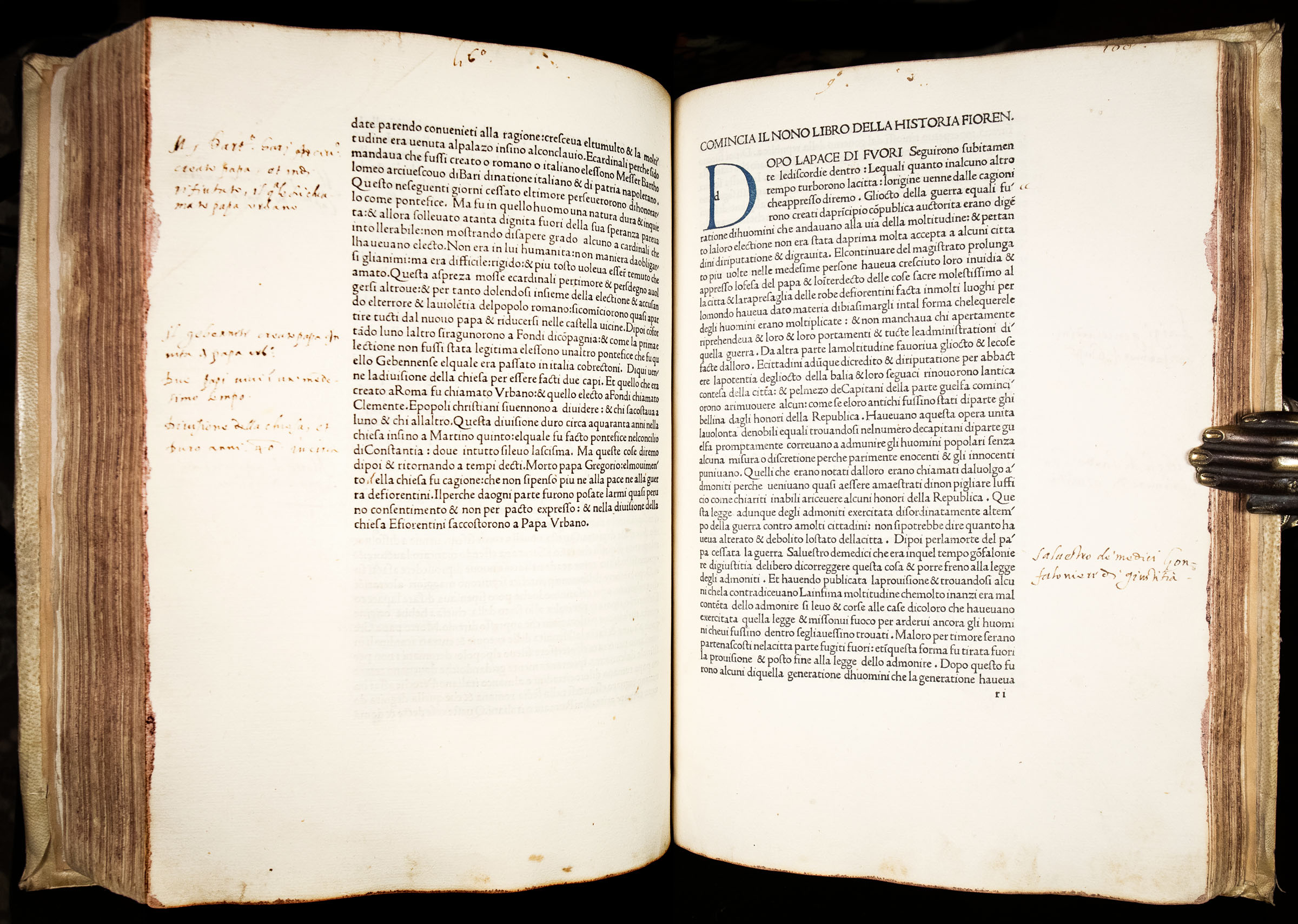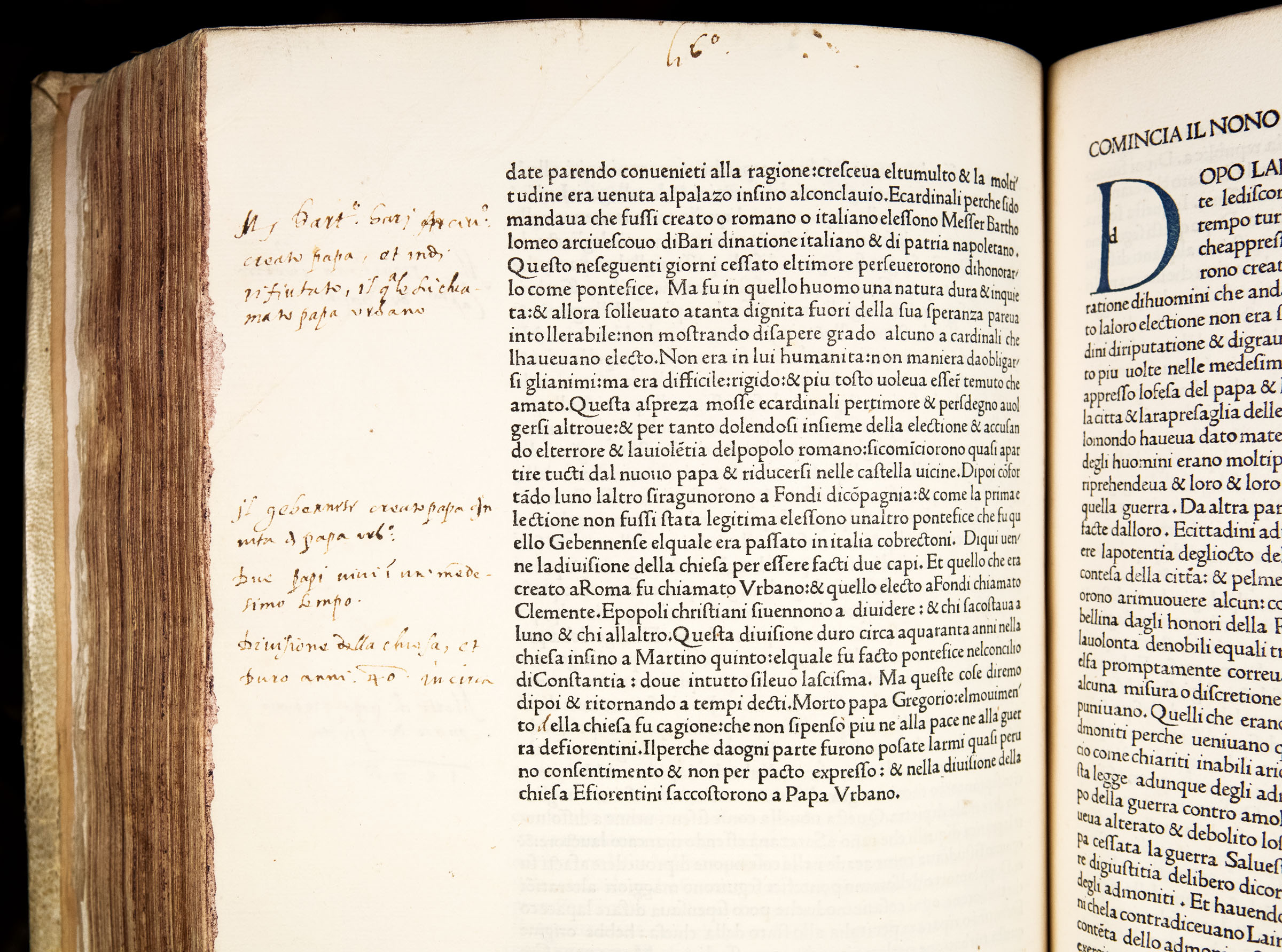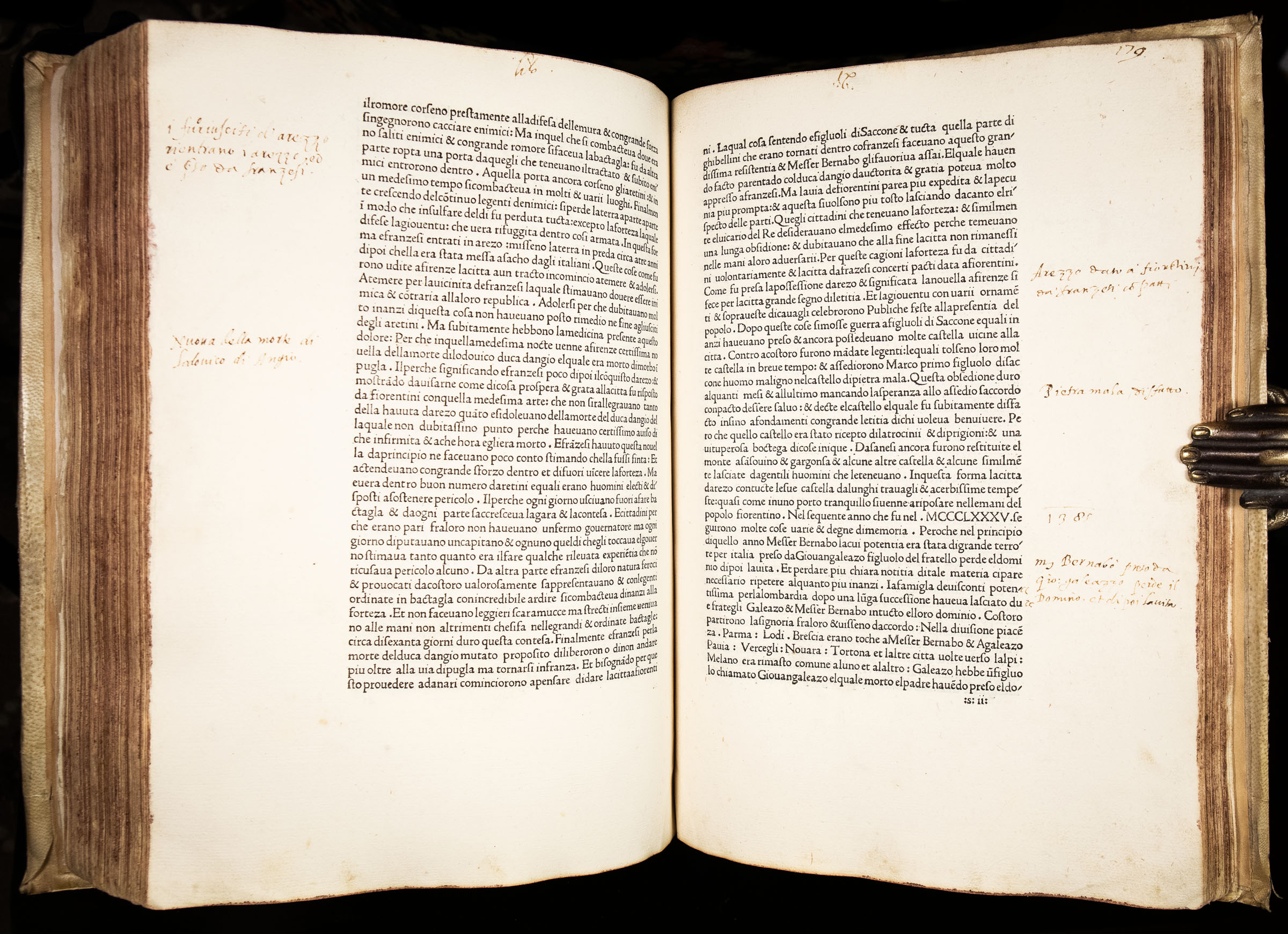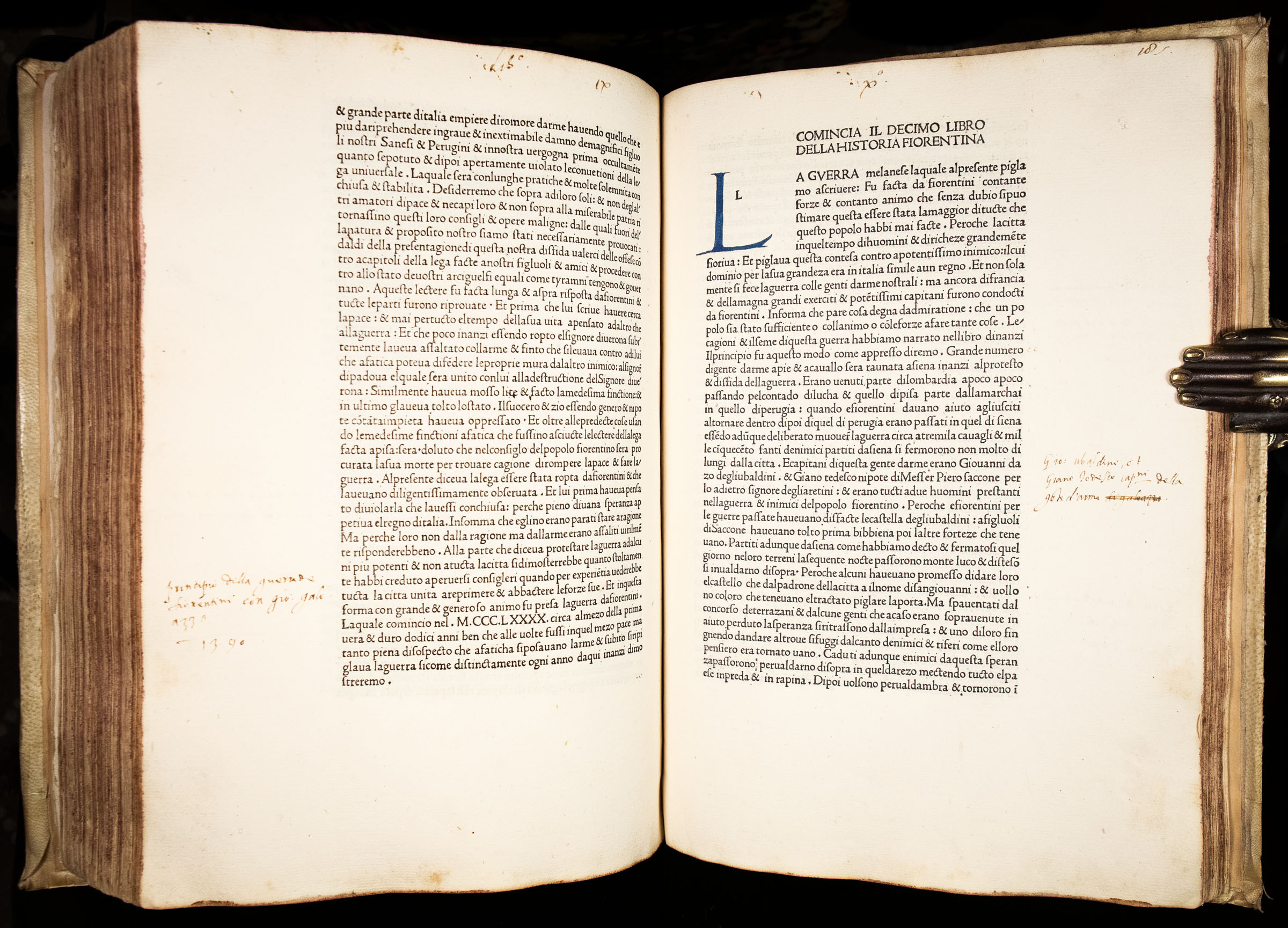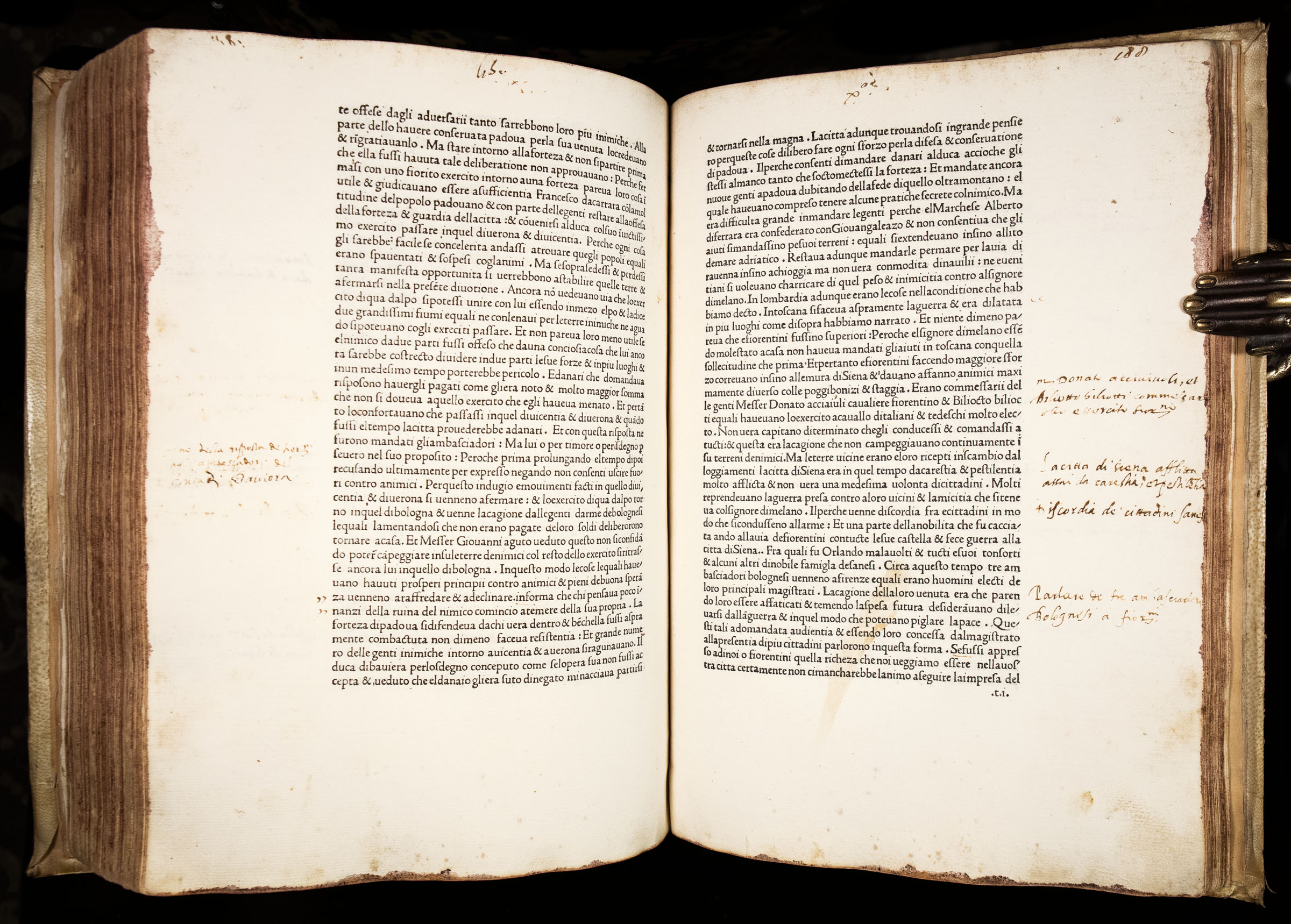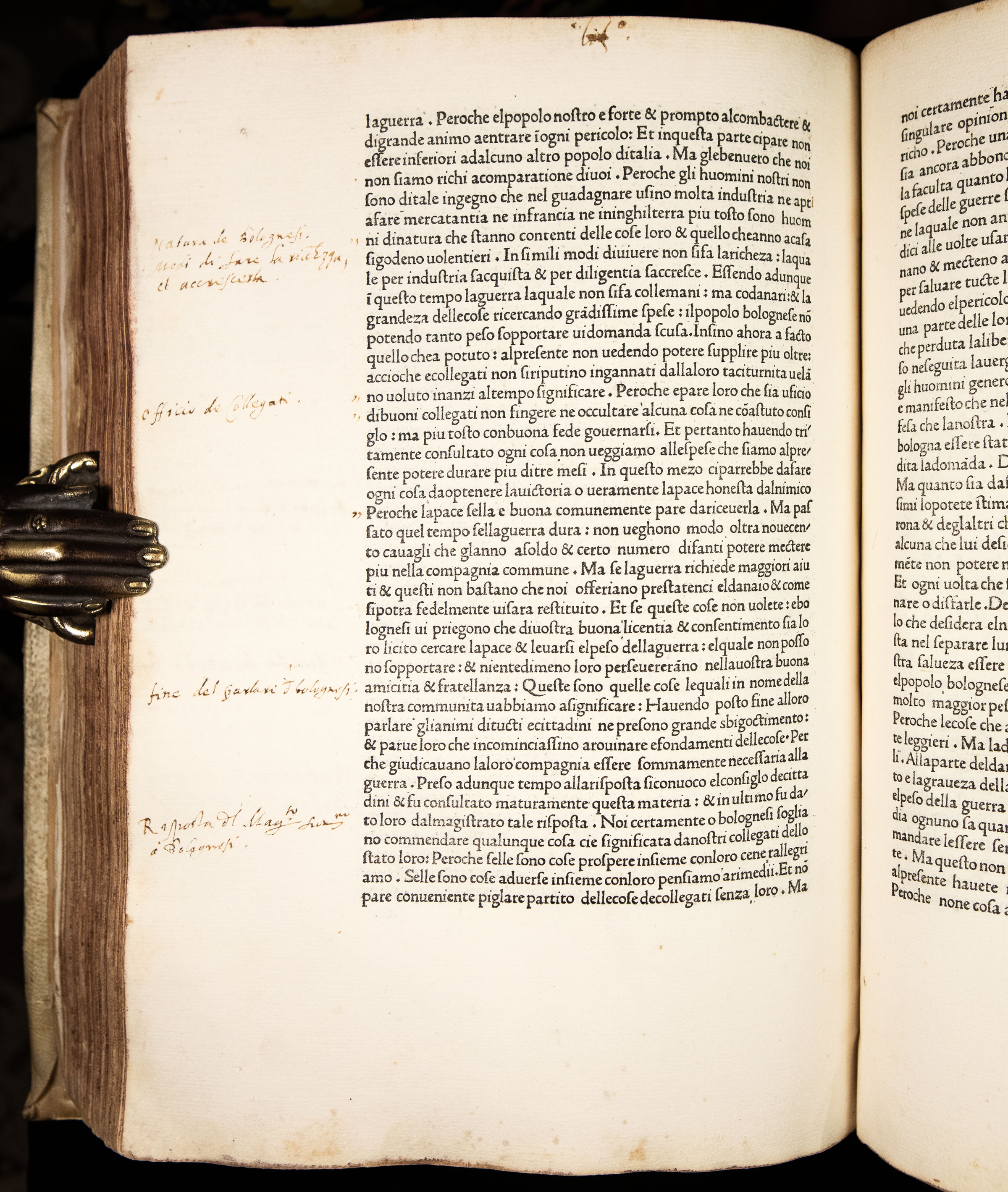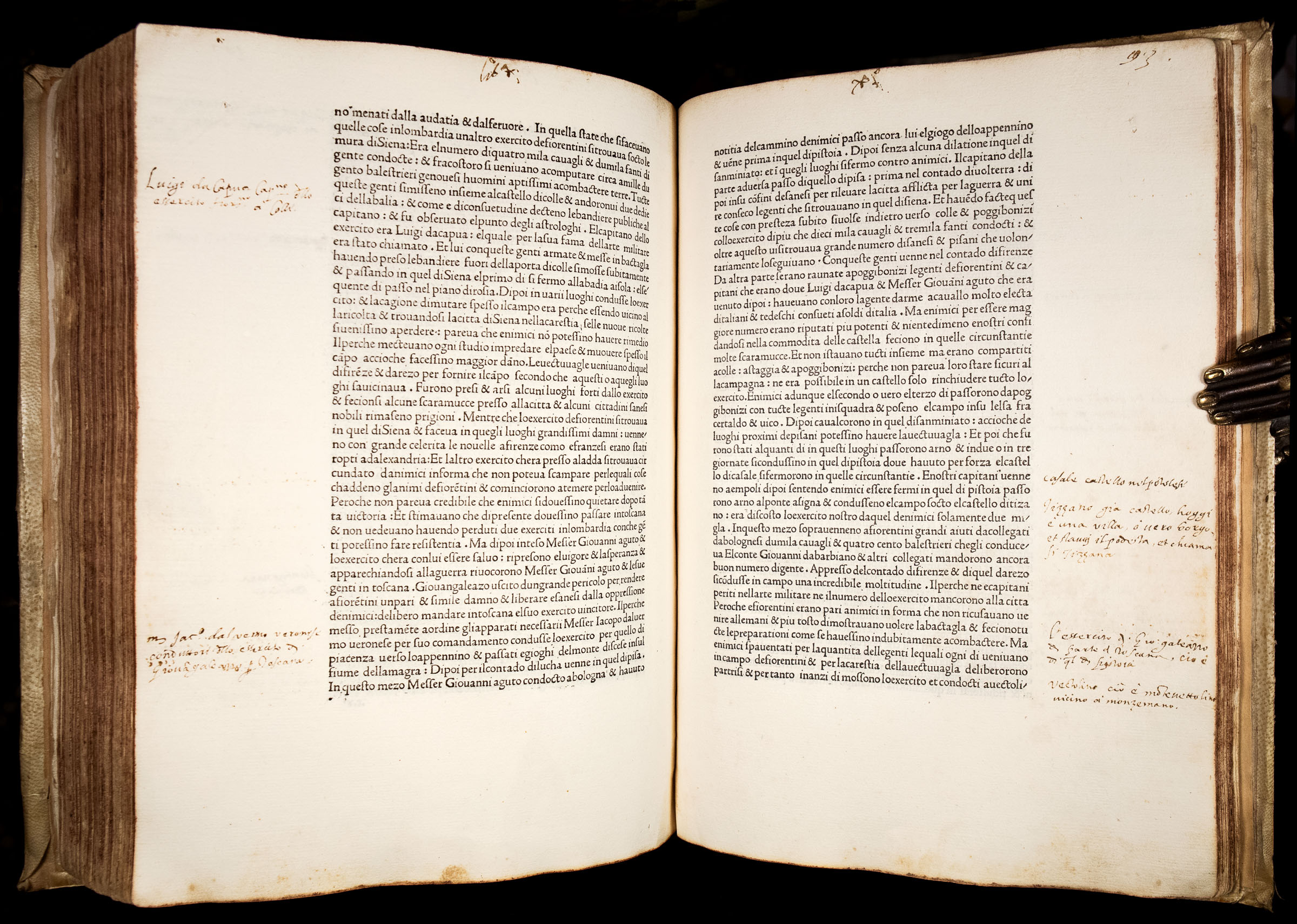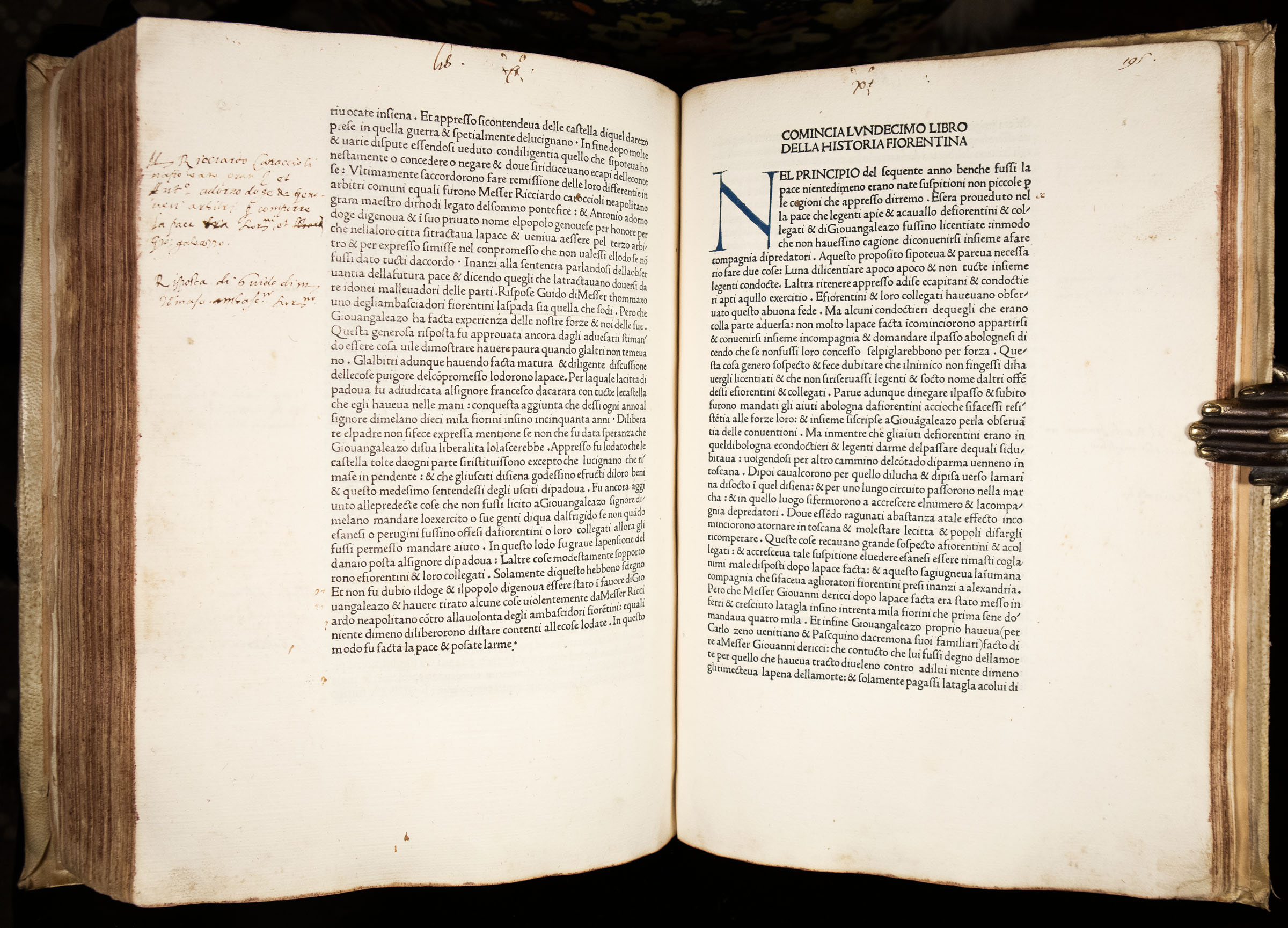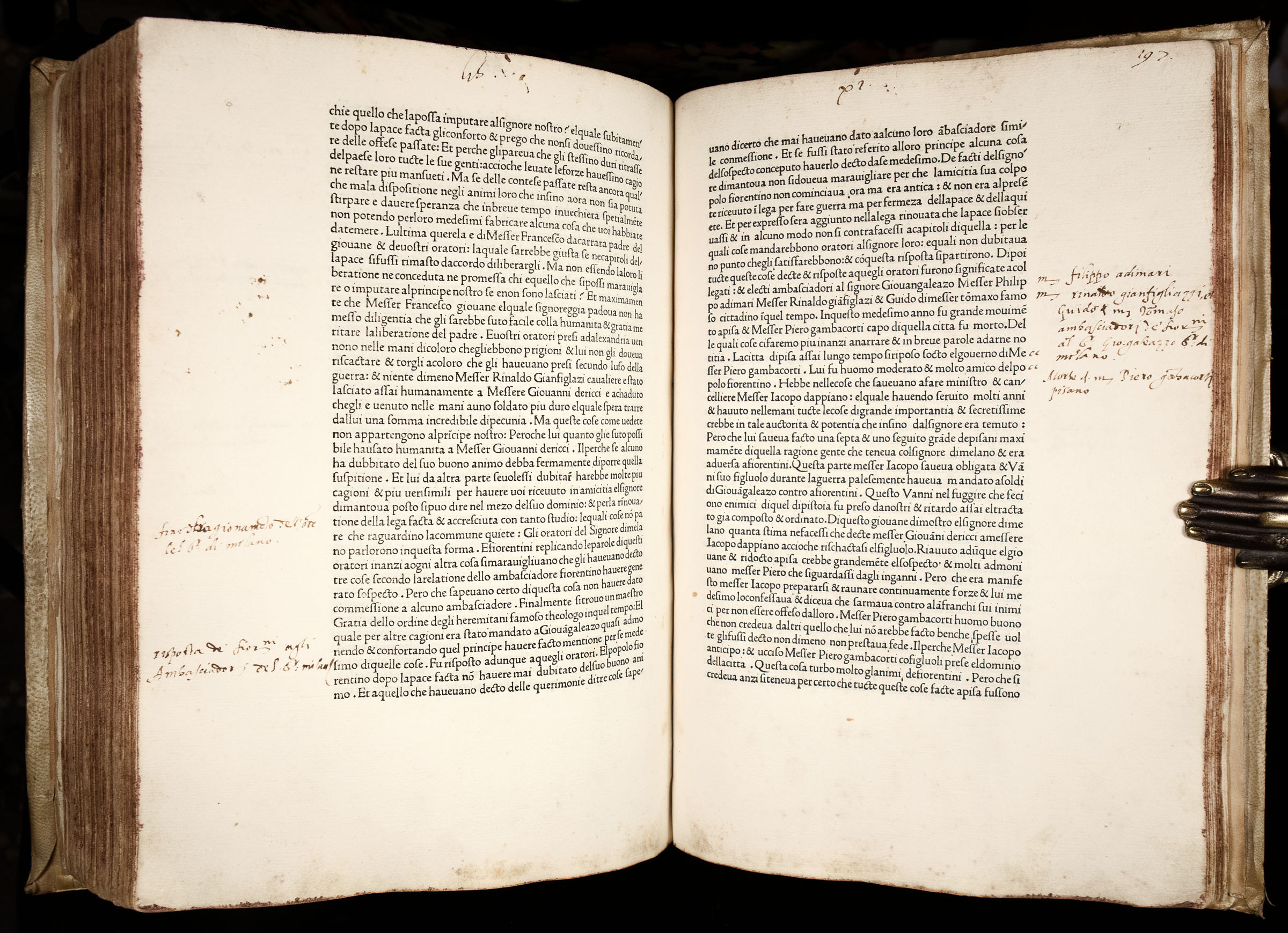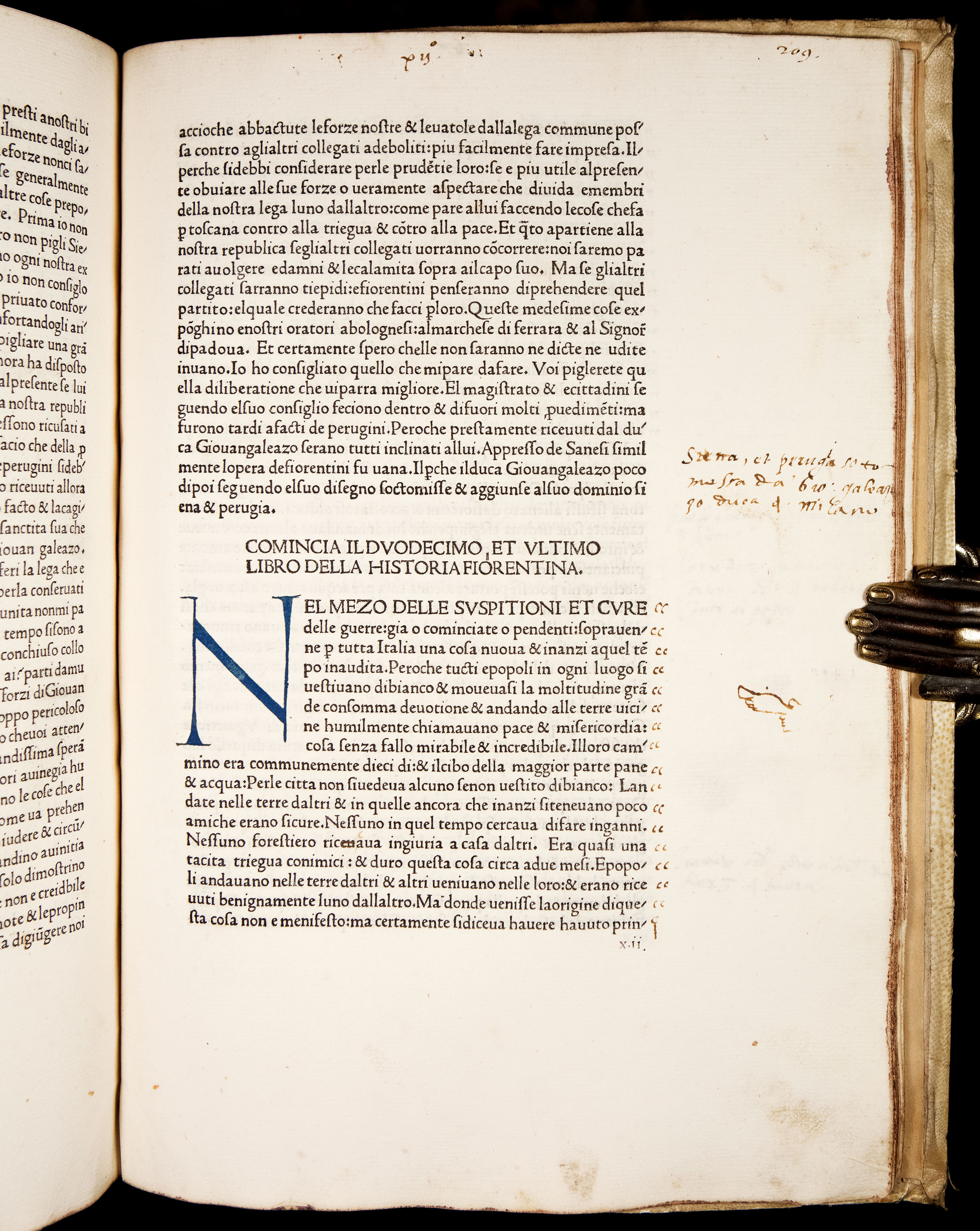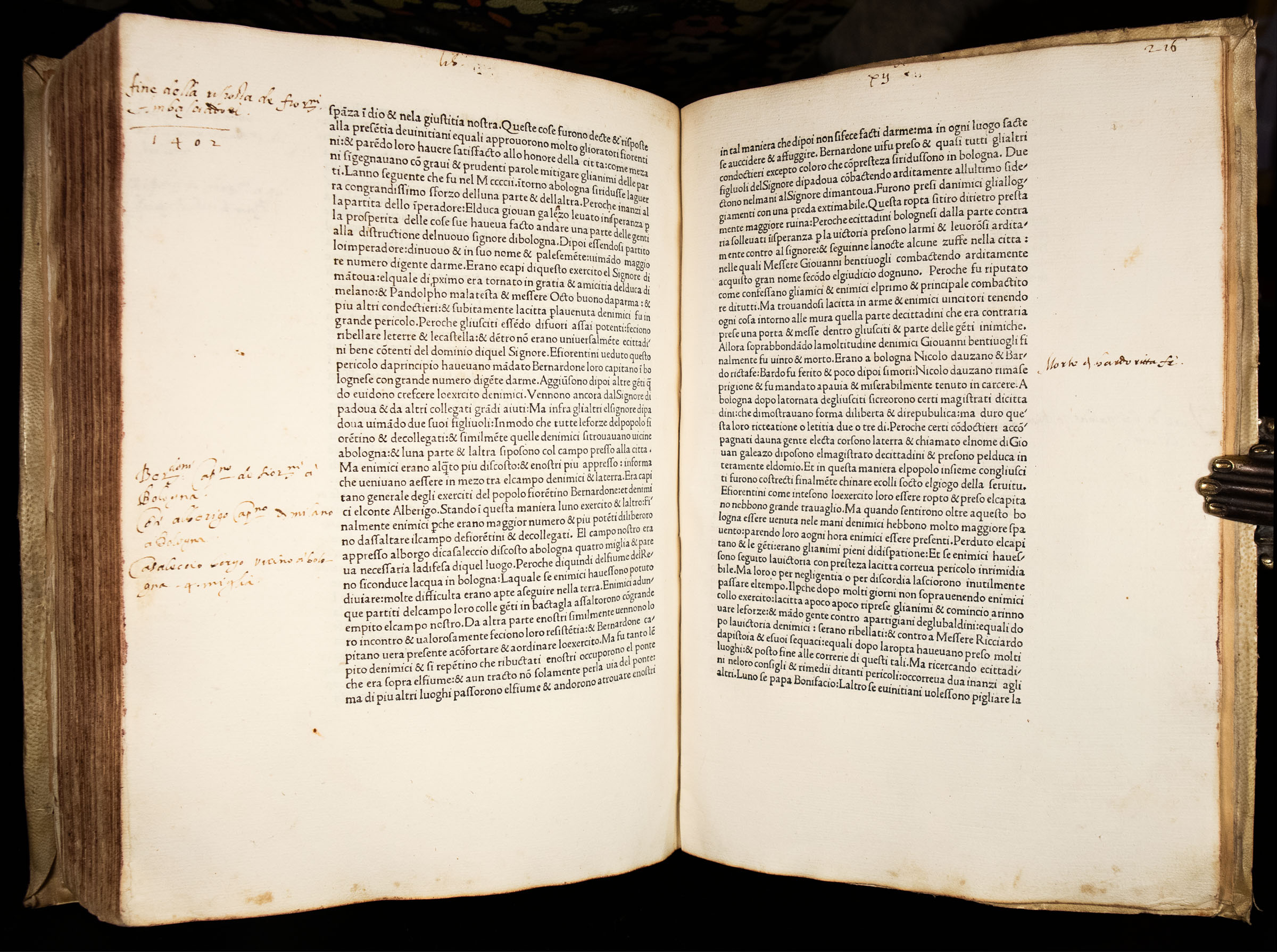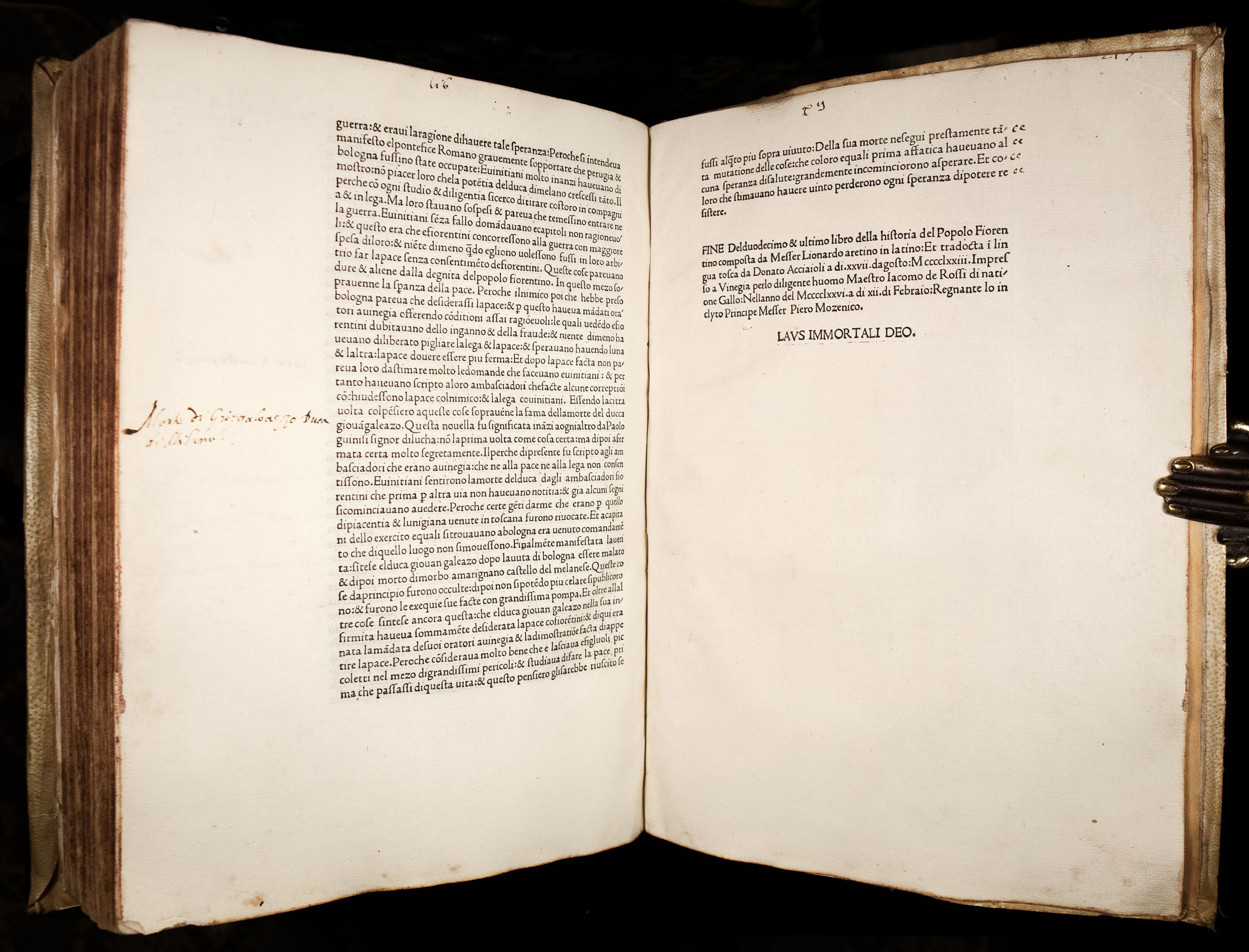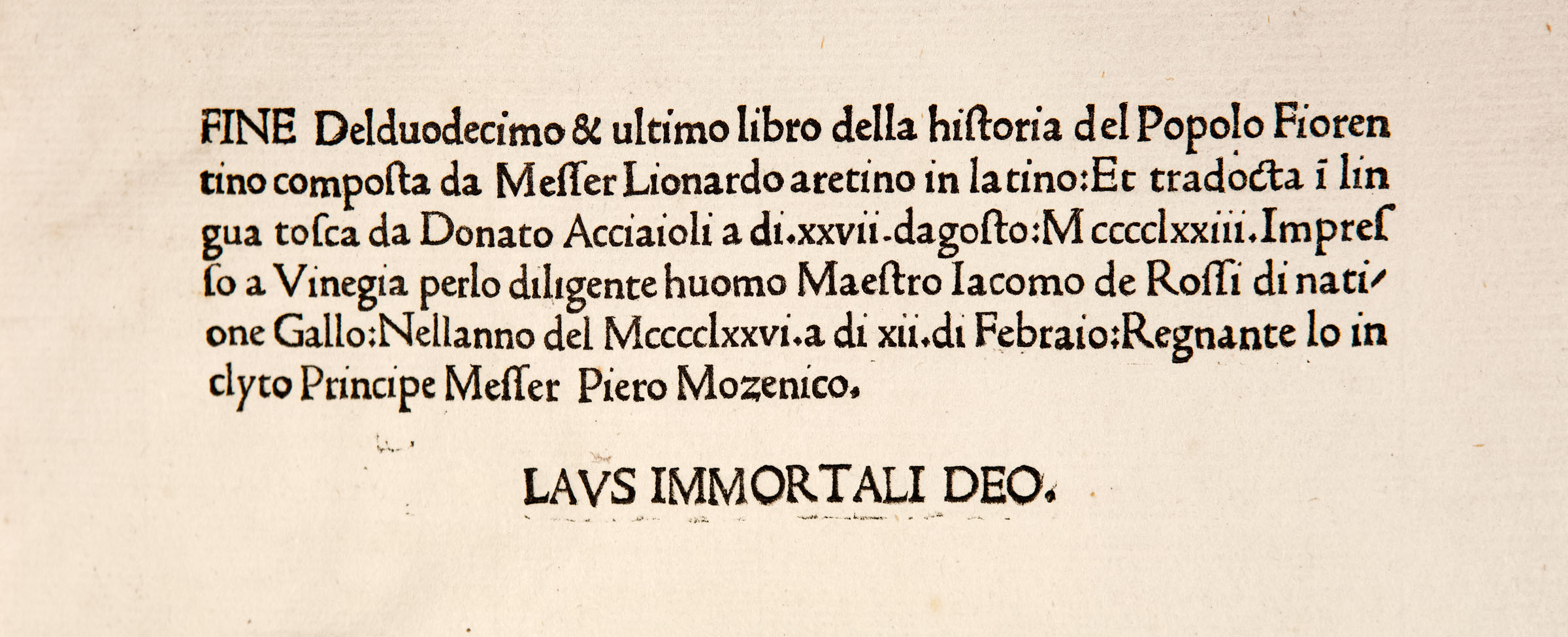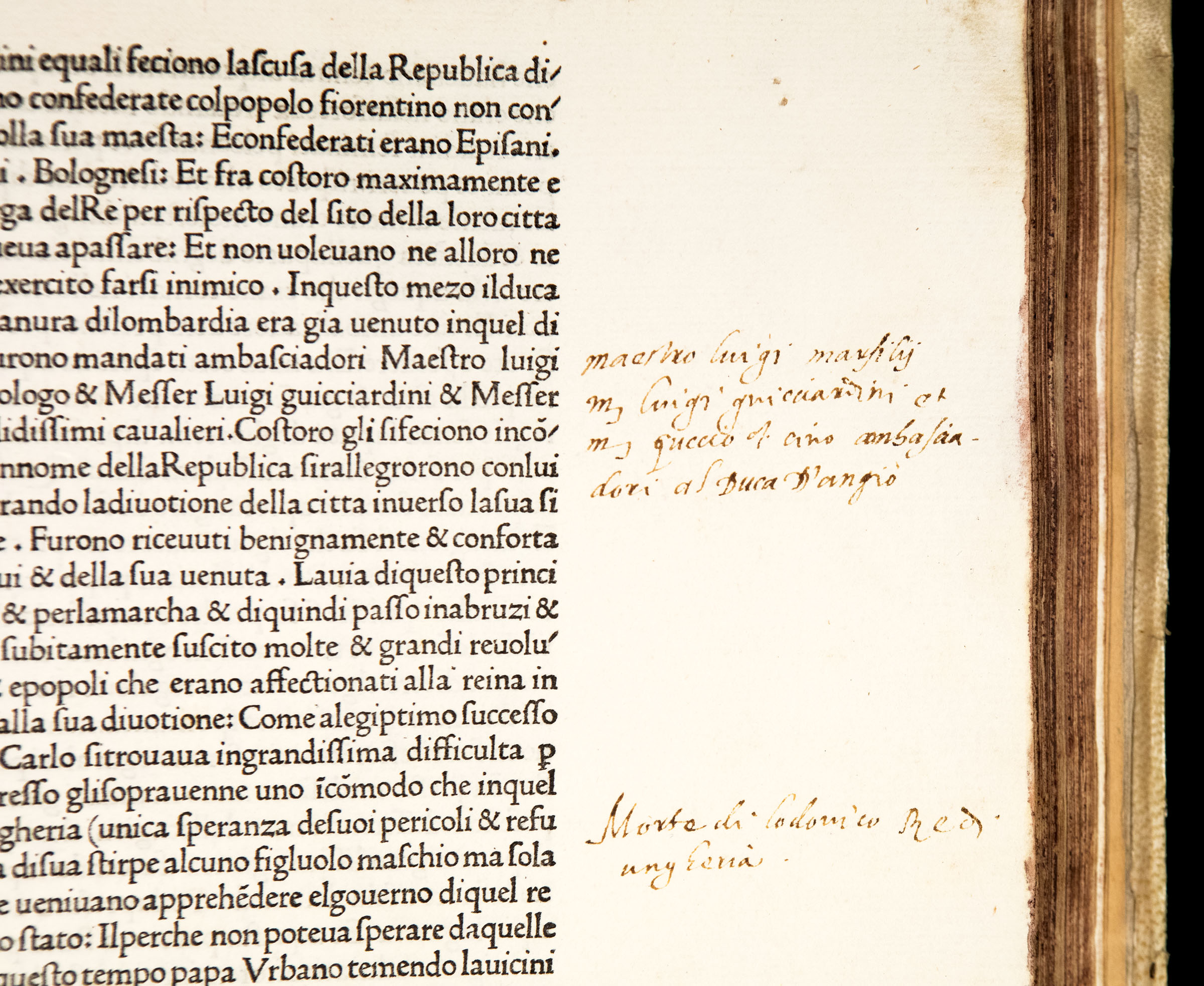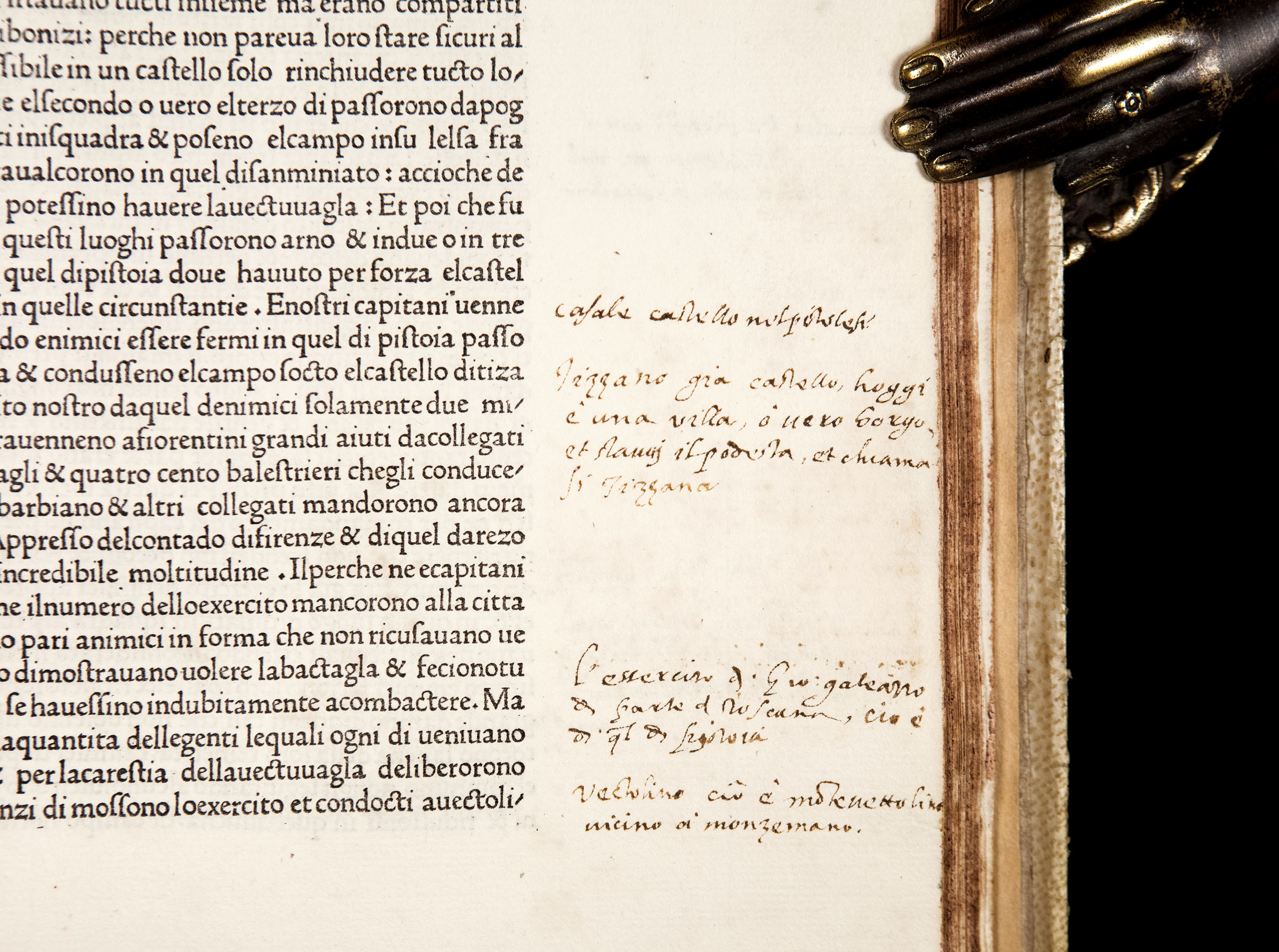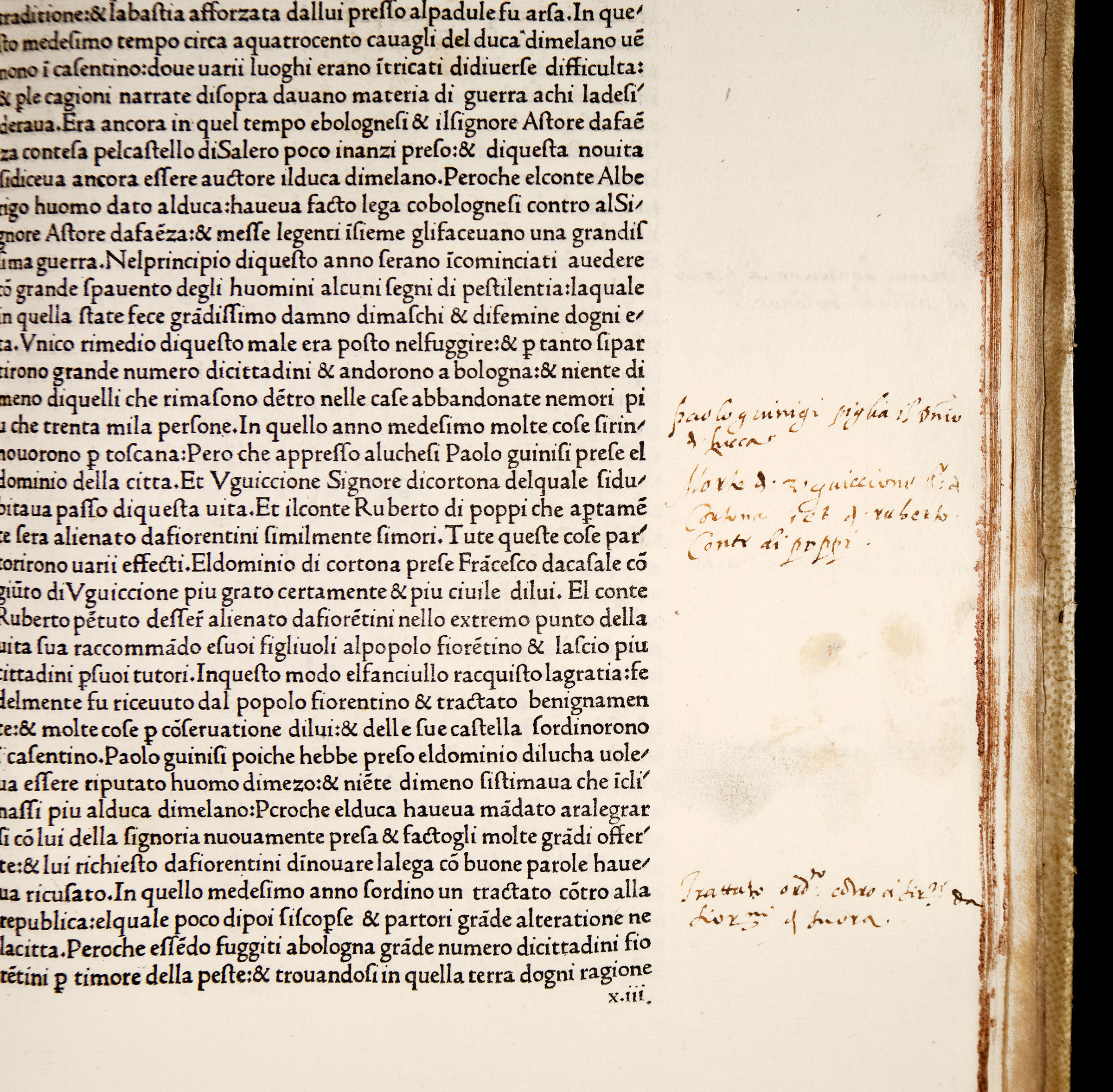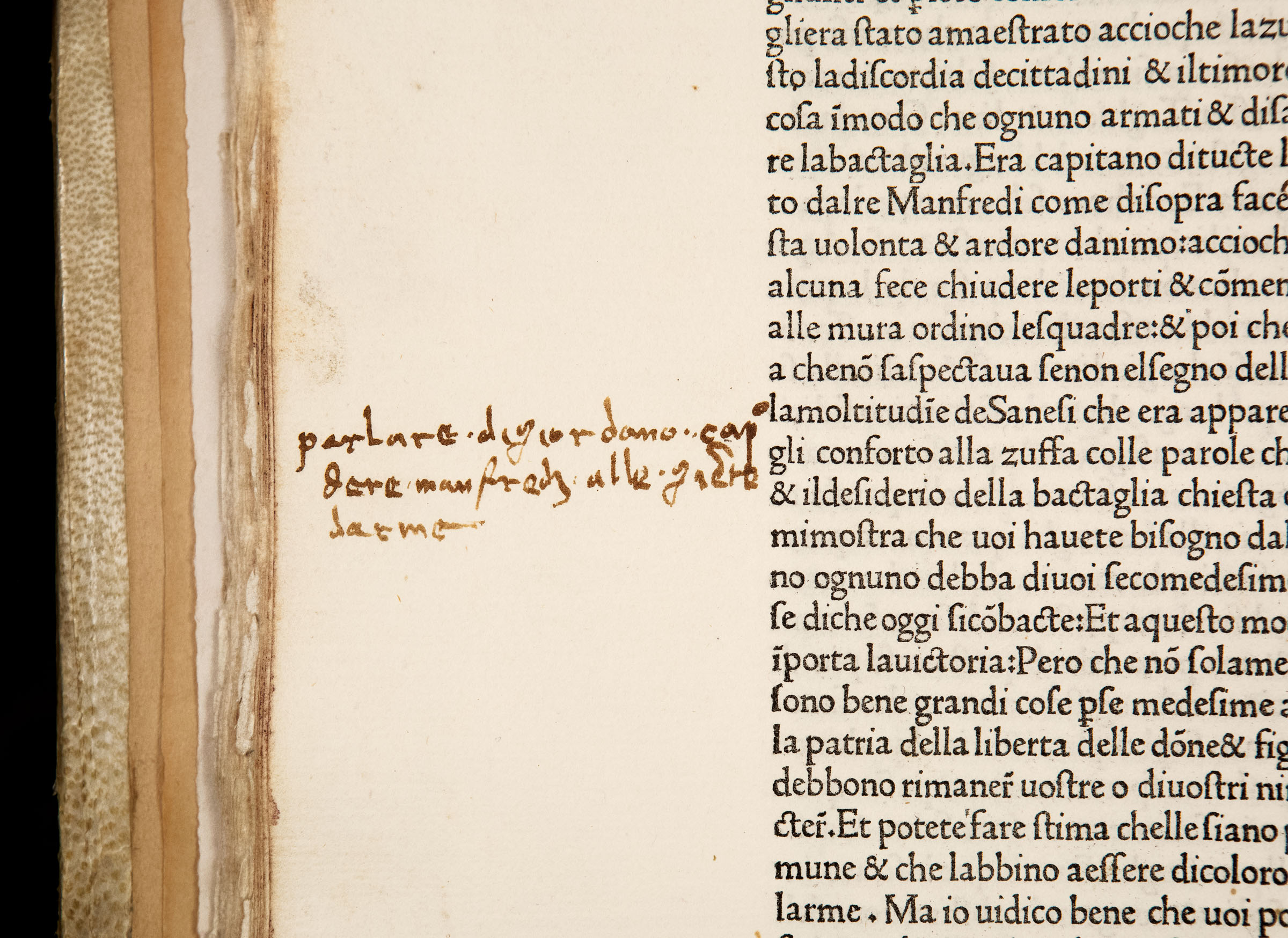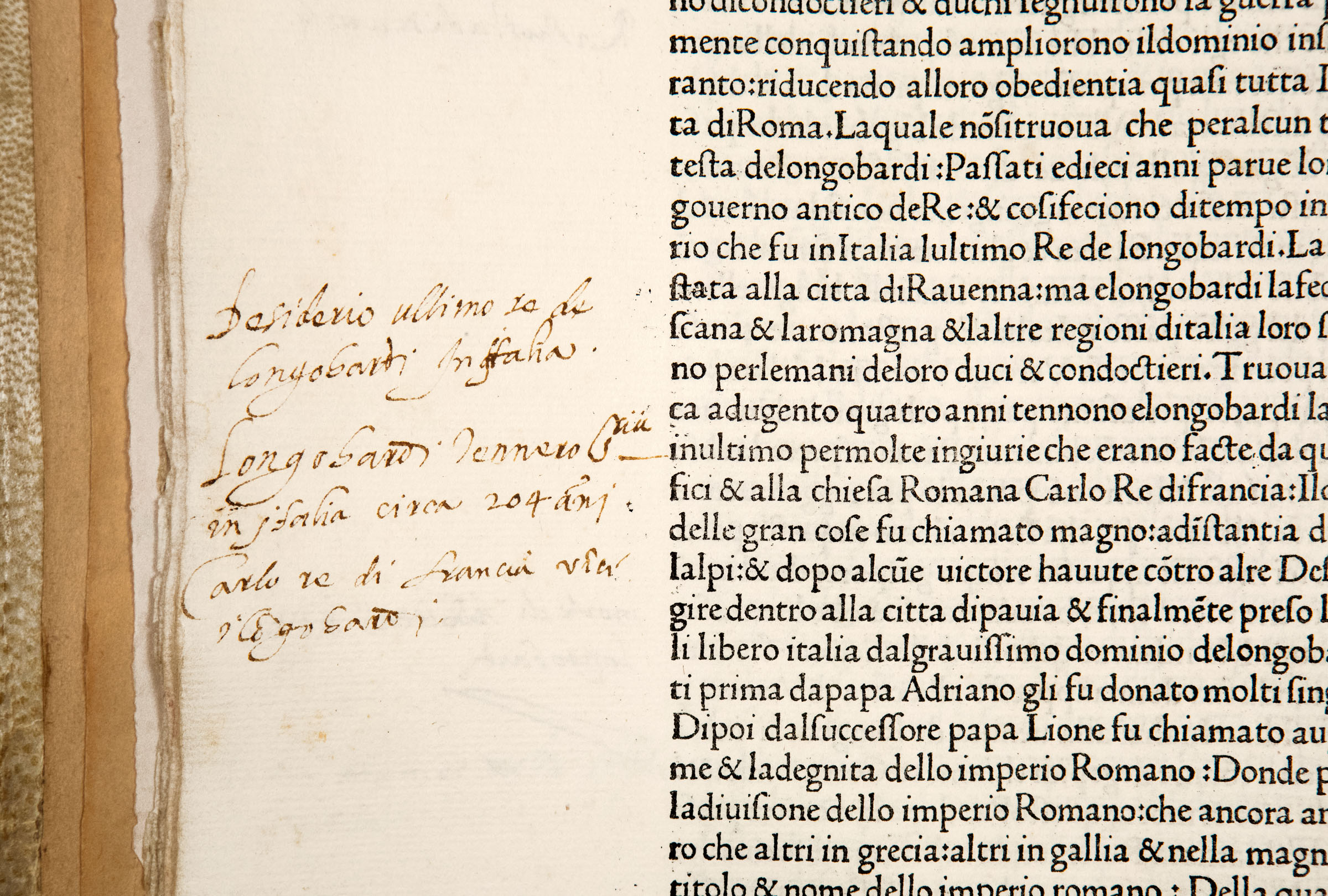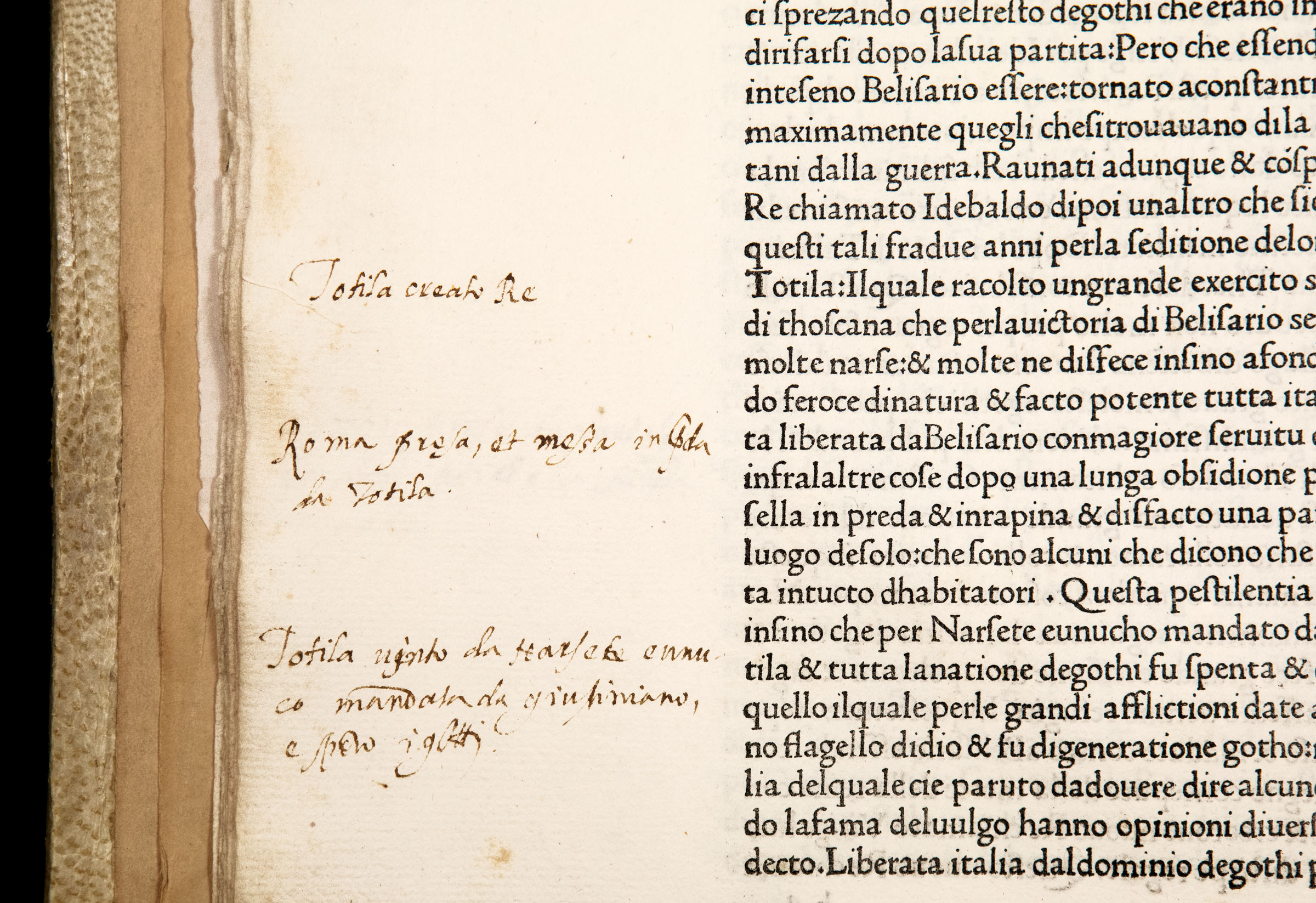
[Early Printing - Incunabula - Venice] [History of Italy - Florence] [Renaissance Humanism] [Dante - Biographies]
Leonardo Bruni
Historia del Popolo Fiorentino
[Historiae Florentini populi (in Italian), transl. by Donato Acciaiuoli]
$5,800
Venice: Jacobus Rubeus, 12 February 1476.
Text in Italian.
Rare FIRST EDITION in any language of Bruni’s influential “History of the Florentine People” in twelve books - the first major work of Renaissance historical writing. Originally written in Latin by Leonardo Bruni (c.1370-1444) modelled on the style of Sallust and Livy, this history of the city of Florence is the first to be based on documentary evidence. Its first appearance in print was this translation into Italian by Donato Acciaiuoli (1429-1478), which was commissioned by the Florentine Signoria. The original Latin edition only appeared more than a century later, in 1610.
Bruni's History of the Florentine Peopleis pioneered the three-period framework of history, and is CONSIDERED THE FIRST MODERN WORK OF HISTORY. It was widely imitated by humanist historians for two centuries following its official publication.
The translation into Italian was made by Donato Acciaioli (1428 – 1478), an Italian scholar and statesman, a member of the Medicean ruling elite in the 1460s, known for his learning (especially in Greek and mathematics) and for his services to his native state, the Republic of Florence.
Bruni worked on the text of his Historiae Florentini populi from 1415 until his death in 1444, using historical documents found in the Florentine city archives. It was meant to be an “official history” of Florence (paid for through a tax exemption for Bruni and his heirs) intended to provide the state of Florence with a solid historical foundation and basis for its independence. The result is a modern, humanistic work that stands in stark contrast to medieval-style chronicles that were frequently produced at the time. Bruni's work covers the Roman period to the year 1404 in twelve books, examining in detail the development of constitutional government in Florence, seen by the author as the heir of the free city-states of ancient Etruria and of the Roman Republic.
The many short anecdotes and biographies interspersed throughout the chronicle include THE FIRST PRINTED ACCOUNT OF THE LIFE OF DANTE. (in Book IV) which Bruni compiled from now-lost archival resources and correspondence.
Leonardo Bruni (1370-1444), the leading civic humanist of the Italian Renaissance, served as apostolic secretary to four popes (1405-1414) and chancellor of Florence (1427-1444). He was famous in his day as a translator, orator, and historian, and was the best-selling author of the fifteenth century.
Bruni’s most notable work, Historiae Florentini populi, pioneered the three-period framework of history — Ancient, Middle Ages, and Modern. The dates Bruni used to define the periods are not exactly what modern historians use today, but he laid the conceptual groundwork for a tripartite division of history. While it probably was not Bruni's intention to secularize history, the three period view of history is unquestionably secular and for that Bruni has been called the first modern historian. The foundation of Bruni's conception can be found with Petrarch, who distinguished the classical period from later cultural decline, or tenebrae (literally "darkness"). Bruni argued that Italy had revived in recent centuries and could therefore be described as entering a new age.
This important edition comes from the press of Venetian printer Jacobus Rubeus, or Jacques Le Rouge, a Frenchman from Chablis, "was a friend of Nicolas Jenson [...] and several of his types [including the font used here] are very close copies of Jensonian models; quite possibly he worked in Jenson's office for a time." (Scholderer, BMC V, p. xiv).
Bibliographic references:
HC *1562; BMC V, 215 (IB. 20085); GW 5612; IGI 2202; Oates 1696; Pellechet 1115; Proctor 4242; Goff B-1247.
Physical description:
Folio; texblock measures ca. 327 mm x 233 mm (very wide margins). Bound in 16th-century full limp vellum. Spine with original manuscript title lettering (faded) and a later printed paper label; endpapers renewed in 19th-century.
216 leaves (forming 432 pages).
Collation: a-k10 [-a1 blank, -a2 preliminary] kk6 l-p10 q12 r-x10.
Textually complete: wanting only the front blank a1 and the preliminary leaf a2 containing translator’s dedicatory epistle, and the beginning of author’s prologue (this leaf is supplied in a nice facsimile from an illuminated copy). The text of Bruni’s Historia is present in its entirety, including the colophon.
Printed in single column, 41 lines per page; text in roman letter: Type 1:110R. 8-line initial spaces with guide letters, filled in (in contemporary hand) with large elegant roman capitals painted in blue. Colophon on recto of the final leaf (x10r), verso blank.
Provenance:
Numerous pages with curious manuscript marginal notes in Italian by a late 15th- or 16th-century reader commenting on the text.
An old stamp of Biblioteca Domenicana di Santa Maria Novella in Florence (on bottom margin of g6r).
A 20th-century bookplate of Stephen Brook, a leading writer on wine, gastronomy, and travel, and the author of a Bibliography of the Gehenna Press.
Condition:
Good antiquarian condition. Binding slightly rubbed, with light soiling and some edge wear. One small superficial hole to vellum (on rear cover). Minor old repair at foot of spine. Endpapers renewed in 19th or early 20th century. Complete, except for the front blank and the preliminary leaf a2 (supplied in facsimile); text of Bruni’s History is complete. Internally with occasional marginal soiling, a few light ink-smudges. Many pages with some manuscript marginalia in early hand. A few pages with minor marginal tears at edges. In all an attractive, clean, solid example, with extremely wide margins.
